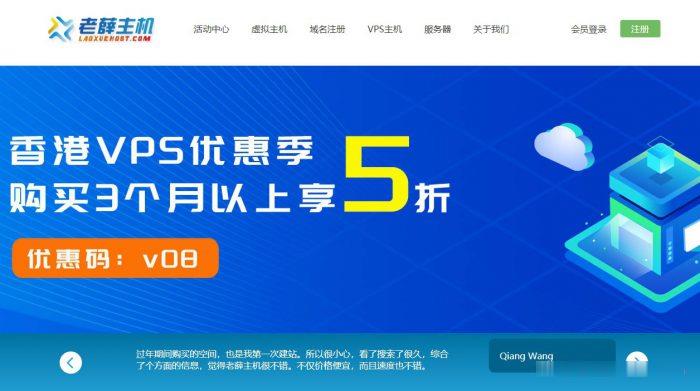metricsb2t
b2t 时间:2021-02-21 阅读:()
Vol.
29,No.
2,March–April2010,pp.
315–335issn0732-2399eissn1526-548X1029020315informsdoi10.
1287/mksc.
1090.
05002010INFORMSTheSoundofSilence:ObservationalLearningintheU.
S.
KidneyMarketJuanjuanZhangSloanSchoolofManagement,MassachusettsInstituteofTechnology,Cambridge,Massachusetts02114,jjzhang@mit.
eduMereobservationofothers'choicescanbeinformativeaboutproductquality.
Thispaperdevelopsanindividual-leveldynamicmodelofobservationallearningandappliesittoanoveldatasetfromtheU.
S.
kidneymarket,wheretransplantcandidatesonawaitinglistsequentiallydecidewhethertoacceptakidneyoffer.
Wendstrongevidenceofobservationallearning:patientsdrawnegativequalityinferencesfromearlierrefusalsinthequeue,thusbecomingmoreinclinedtowardsrefusalthemselves.
Thisself-reinforcingchainofinferencesleadstopoorkidneyutilizationdespitethecontinualshortageinkidneysupply.
Counterfactualpol-icysimulationsshowthatpatientswouldhavemademoreefcientuseofkidneyshadtheconcernsbehindearlierrefusalsbeenshared.
Thisstudyyieldsasetofmarketingimplications.
Inparticular,weshowthatobservationallearningandinformationsharingshapeconsumerchoicesinmarkedlydifferentways.
Optimalmarketingstrategiesshouldtakeintoaccounthowconsumerslearnfromothers.
Keywords:observationallearning;learningmodels;informationalcascades;herding;qualityinference;Bayes'rule;dynamicprogramming;kidneyallocationHistory:Received:July12,2006;accepted:February19,2009;processedbyDavidGodes.
PublishedonlineinArticlesinAdvanceJuly23,2009.
1.
IntroductionMaciejLampedeclaredfortheNationalBasketballAssociation(NBA)draftattheperfecttime.
HewastherarestcommodityinanNBAdraft—atall,young,Europeanbigmanwithasweetshootingstroke.
Hewasseenasrawbutfullofpotential,whichmadehimatop-tenpickinmostexperts'projections,andashighasnumberveoverall(Lago2003).
Unfortu-nately,ondraftday,theMiamiHeatpassedonLampeatnumberve,andthebadnewsstartedtosnowball.
Teamsgrosslyoverestimatedtherisksininvestingarst-roundpickonLampe,allowinghimtoslipallthewaytothesecondround,atnumber30overall.
Sub-sequentlyplayinginBCKhimkiinMoscow,LampewasawardedtheMVPintheRussianCupnalinFebruary2008.
MaciejLampeisnotalone.
Inlabormarkets,anepisodeofunemploymentisknowntodampenthesuccessofajobsearchbeyondwhatisjustiedbythejobcandidate'squalications.
Inhousingmarkets,skepticismaccumulatesaroundthevalueofaprop-ertyasits"timeonmarket"increases,forcingsomesellerstorelisttheirpropertiestobreakthischainofnegativeinferences.
Ingeneral,peoplefrequentlyengagein"observationallearning,"drawingqual-ityinferencesfrommereobservationofpeerchoices:restaurantsthatmaintainasizablewaitinglistareoftenperceivedtobeofhighquality,bookbuyerspursuebestsellers,andInternetsurfersswarmhighclick-volumecontents.
Marketerstoohavewokenuptotheprevalenceofobservationallearningandhavecreatedinnovativepromotionaltacticstoharnessitsmagic.
Forexample,tointroducetheT68iphonestotheUnitedStatesin2002,SonyEricssonsenttrainedactressestobarsandloungeswiththephonesinhopesthatonlookerswouldnoticeandbelievethattheystumbledontoahotnewproduct(Vranica2002).
Thegoalofthispaperistoempiricallymodelobser-vationallearningbehavioranditsimpactonchoices.
Itischallenging,however,toempiricallyidentifytheexistenceandisolatetheimpactofobservationallearning.
First,observationofchoicesoftencoex-istswithothersourcesofqualityinformationsuchasword-of-mouthcommunication(e.
g.
,EllisonandFudenberg1995,GodesandMayzlin2004,Mayzlin2006),payoffexperiences(e.
g.
,Nelson1970;ErdemandKeane1996;CamererandHo1999;Villas-Boas2004,2006;Hitsch2006;Narayananetal.
2007),andthesupplier'sselectionofmarketingmixvariables(e.
g.
,MoorthyandSrinivasan1995,Wernerfelt1995,Desai2000,AndersonandSimester2001,GuoandZhao2009).
Second,eveninmarketswhereobser-vationallearningplaysadominantrole,thechoicedynamicsareoftencomplex.
Forexample,apoten-tialrestaurantpatronmaynotknowwhetherthosewaitinginlinehadallindependentlychosenthis315Zhang:TheSoundofSilence:ObservationalLearningintheU.
S.
KidneyMarket316MarketingScience29(2),pp.
315–335,2010INFORMSrestaurant,orsomehadbeenattractedbythelineitself.
Dependingontheconstructionofthechoicesequence,thequalityinferencecanbevastlydifferent.
Thispapermeetsthesechallengesbystudy-ingobservationallearninginperhapsitscleanestenvironment—theU.
S.
marketoftransplantkidneys.
Whenadeceased-donorkidneyisprocured,compat-ibletransplantcandidatesaresortedintoaqueuefollowinganationallyimplementedprioritysystem.
Thekidneytravelsdownthequeueuntilapatientiswillingtoacceptitfortransplantation.
Itisidealtostudyobservationallearninginthiskidneymarketforthefollowingreasons.
First,decisionsaresequen-tial,andthesequenceisconstructedthroughacom-monlyknownprocess.
Second,privacyconcernsandthelimiteddecisiontimeminimizethechanceforbetween-patientcommunication.
Meanwhile,obser-vationallearningisfullyenabledinthatallprevi-ousdecisionsareobservable—thefactthatapatientisofferedakidneyunambiguouslyimpliesthatallprecedingpatientsonthequeuehaveturneddownthiskidney.
Third,thekidneymarketisunlikelytobeinuencedbyotherprimarymechanismsbehinduni-formsocialbehavior,suchassanctionsofdeviants,preferenceforsocialidentication(e.
g.
,Kuksov2007),andnetworkeffects(e.
g.
,YangandAllenby2003,Nairetal.
2004,Sunetal.
2004).
Inparticular,kidneysdonotcontainthe"publicappearancevalue"thatpartlyexplainstheurgetohavetherightcellphone,choosetherightrestaurant,orsporttherightfashiongear.
ThispaperadoptsastructuralBayesianapproachtomodelingobservationallearning.
Whereasallpatientsinaqueueobservetheobjectivekidneyqualitymea-sures(e.
g.
,donorage),eachpatientalsoreceivesaprivatequalitysignal(e.
g.
,herphysician'srecommen-dation).
Ifakidneyispassedontothesecondpatient,sheknowsthattherstpatient'sprivatesignalmusthavefailedtoreachathresholddeterminedbytherstpatient'sutilityfunction.
ThesecondpatientcanthenapplyBayes'ruletoupdateherqualityper-ceptionofthiskidney.
Allthingsbeingequal,therstpatient'srejectiondecisionlowersthesecondpatient'sperceptionofthekidney'squalityandhenceherpropensitytoaccept.
Thesecondpatient'slikelyrefusalinturnlowersthequalityperceptionforsub-sequentpatients,triggeringaherdofrefusalsdownthequeue.
Asaresult,akidney'schanceofaccep-tancecriticallydependsonitschoicehistoryaswellasitsintrinsicquality.
Intheobservationallearningliterature,thepio-neeringworksofBanerjee(1992)andBikhchandanietal.
(1992)theoreticallyprovethatobservationallearningmayleadtoinformationalcascadesandherdbehavior,whereindividualsrationallyignoretheirprivateinformationandrepeattheirpredecessors'actions.
Empiricallydocumentingobservationallearn-ingthereforeoftenreliesonseekingevidenceofconvergenceinactionsorexperimentalmanipula-tion(e.
g.
,AndersonandHolt1997,elenandKariv2004).
1Thesourceofidenticationinthispaperisthevariationinapatient'squeueposition,whichdeterminestheamountofobservationallearningthepatientisexposedto.
Asaresult,thispaperdoesnotrequireactionconvergencetoidentifyobser-vationallearning.
Infact,byembeddingsequen-tialBayesianupdatinginanindividual-levelchoicemodel,weareabletoquantifytheimpactofobserva-tionallearningwiththecontinuouschangesinposte-riorvaluation,whichcapturesthenuancednonlinearpaceofrepeatedobservationallearning.
Furthermore,thisindividual-levelapproachallowsustoexplicitlymodelhowobservationallearningofcommonvalues(suchaskidneyquality)ismoderatedbyprivateval-ues(suchaspatient-donortissuematch).
Finally,thestructuralframeworkenablesasetofpolicyexper-iments,especiallycounterfactualcomparisonofanarrayoflearningmechanisms.
2Themostcommonreasonforpatientstorejectakidneyofferisthatthekidneyisbelievedtobeofmarginalqualityandthatpatientschoosetowaitforbetterkidneys(UnitedNetworkforOrganShar-ing(UNOS)2002).
Thatis,kidneyadoptiondecisionsinvolveadynamictrade-off.
Forexample,evenifkid-neysarebelievedtobeofpoorqualitywhentheyreachthebackofthequeue,patientsatthebackofthequeuearealsolesslikelytoreceivegoodkidneysinthefuture.
Tomodelthisintertemporaltrade-off,wecastqualitylearninginadynamicchoiceset-tingwhereforward-lookingpatientsseektomaxi-mizetheirexpecteddiscountedpresentvalue.
Thisdynamicmodelallowsustocapturehowpatients'decisionsdependontheprogressionoftheirhealthconditions,theirchanceofgettingkidneyoffersinthefuture,andthequalityofthesefuturekidneyoffers,whichinturndependsonotherpatients'decisionrules.
Wendsignicantevidenceofobservationallearn-ing.
Atrstglance,evenidenticalkidneysfromthesamedonorarereceivedmuchdifferently.
Whereassomekidneysareacceptedearlyoninthequeue,theiridenticalcounterpartshavetogofardownthelinetondatransplantrecipient.
Inotherwords,earlyrejectionsseemtoconsiderablyinuencesubsequentdecisions.
Afterfurthercontrollingforpatient-donormatch,deteriorationofkidneyqualitywhentravelingdowntheline,patients'optionvalueofwaiting,and1PleaseseeBikhchandanietal.
(1998)forareviewoftheobserva-tionallearningliterature.
2PleaseseeChintaguntaetal.
(2006)foradiscussionofthedevel-opmentandapplicationofstructuralmodelsinmarketing.
Zhang:TheSoundofSilence:ObservationalLearningintheU.
S.
KidneyMarketMarketingScience29(2),pp.
315–335,2010INFORMS317patients'riskattitudes,modelestimationconrmsthesignicantimpactofobservationallearning—onaver-age,thefurtherakidneytravelsdownthequeue,theloweritsperceivedquality.
Acompetingexplana-tionisthatnegativeinformationaboutkidneyquality,althoughunobservabletotheresearcher,lowerstheacceptancepropensityofallpatients.
Thisexplanationismodeled,estimated,andruledout.
Anotherprimarylearningmechanisminsocialcontextsisinformationsharing.
Policypermitting,apatientcouldhaveobtainedprivatequalitysignalsfromherpredecessorswhohaveevaluatedandre-jectedthekidney.
Observationallearningandinforma-tionsharinghavedistinctchoiceimplications.
Toseethis,supposeapatientreceivesafavorablesignalbutdecidestorejectthekidneybecauseofherhigherstan-dards.
Auniquepredictionofobservationallearningisthatarejectionalways(weakly)decreasessubsequentpatients'qualityperception.
However,ifthisfavorableprivatesignalissharedwithsubsequentpatients,itmayhelpthemevaluatethekidneypositivelydespitetherejectiondecision.
Iftheaverageofprivatesig-nalsrevealsthetrueunderlyingvalueofakidney,whenmoresignalsaggregate,choiceswillconvergetoanefcientlevel.
Indeed,policyexperimentsshowthatpatientswouldhavemademuchmoreefcientdecisionsweretheyabletocommunicatethereasonsbehindrejectiondecisions.
ThisndingmayhelptheU.
S.
organallocationsystemalleviatetheurgentinef-ciencyproblem,wheremostoftherefusedkidneysareofacceptableclinicalvaluedespitethesignicantshortageoftransplantkidneysupply(UNOS2002).
Animportantmessagetomarketersingeneralisthataproduct'smarketperformanceismorethanasimplesumofsales.
Asmallnumberofchoicescanbecriticalindeterminingproductsuccess,espe-ciallyincategorieswithhighlyvisiblechoicesbutlim-itedinformationsharing.
Earlyadoptersandmarginalconsumersarelikelytobesuchpivotalinuencers.
Optimalmarketingstrategiesshouldtakeintoaccountwhetherandhowconsumerslearnfromothers.
Therestofthepaperisorganizedasfollows.
Sec-tion2overviewstheU.
S.
kidneytransplantmarketandpresentsthedata.
Section3modelsthreelearningmechanisms—nosociallearning,informationshar-ing,andobservationallearning—andembedstheselearningmechanismsintoadynamicchoicemodelofforward-lookingpatients.
Thesemodelsareesti-matedin§4,wherewendthattheobservationallearningmodelexplainsthedatabest.
Acompet-ingmodelofpublic(i.
e.
,availabletoallpatients)qualityinformationisruledout.
Section5simulatesandcomparespatientdecisionsunderdifferentlearn-ingmechanisms.
Section6discusseshowtheinsightswouldapplytogeneralmarkets.
Section7concludesthepaperandsuggestsdirectionsforfutureresearch.
2.
TheU.
S.
KidneyMarketandData2.
1.
OverviewoftheU.
S.
KidneyMarketEachyearmorethan40,000peopleintheUnitedStatesdevelopend-stagerenaldiseases.
Thetwomajortreatmentsaredialysisandkidneytransplan-tation.
Dialysisrequiresatleast9to12hoursoftreatmentatadialysiscentereachweek.
Transplanta-tionfreespatientsfromtheinconveniencesofdialysisand,ifsuccessful,offersaqualityoflifecompara-bletoonewithoutkidneydisease.
Transplantkidneyscomefromeitherlivingdonorsordeceaseddonors.
Althoughtheformersourceissuperior,thesupplyislimitedintheUnitedStates.
Asaresult,morethanhalfofdonatedkidneysareprocuredfromdeceaseddonors.
Patientswaitingfordeceased-donorkidneysareplacedonawaitinglistadministeredbytheUNOS.
Whenakidneyisprocured,bloodtype-compatiblepatientswithinthesameorganprocurementorga-nization(OPO)aresortedintoaqueuebasedonaUNOSpointsystem.
Theappendixprovidesdetailsonthequeuingscheme,whichislargelyrst-come,rst-servewithlocalperturbationscausedbytissuematch,highpeakpanelreactiveantibody(PRA)mea-sures,andjuvenility.
Thekidneyisofferedsequen-tiallytopatientsinthequeueuntilsomeoneacceptsitfortransplantation.
Duringthesearchfortransplantrecipients,kidneysarekeptfrozenandaccumulatecoldischemiatime.
Alongcoldischemiatimemayleadtoinferiortransplantoutcomes.
Therefore,kid-neysarenormallydiscardedifnotacceptedwithin48hours.
Therehasbeenanacuteshortageofdeceased-donorkidneysintheUnitedStates.
Accordingtothe2006AnnualReportoftheOrganProcurementandTransplantationNetwork(OPTN),anorgani-zationadministeredbyUNOSundercontractwiththeU.
S.
DepartmentofHealthandHumanServices,32,381newend-stagerenaldiseasespatientsintheUnitedStatesjoinedthetransplantwaitinglistin2006,whileonly10,659deceased-donorkidneysweretransplantedinthatyear.
Between1992and2006,thenumberofpeopleonthenationalkidneywait-inglistgrewfrom22,063to65,199.
Despitetheshortsupply,morethan10%ofdeceased-donorkidneysarediscardedafterbeingrepeatedlyrefusedbytrans-plantcandidates.
OPTNhasidentiedthelowkidneyacceptancerateasamajorchallengetokidneyalloca-tionefciency.
Thealarminginefciencyofthecurrentkidneyallocationsystemhasattractedsubstantialattentioninacademia.
Studiessuggestanumberofsolu-tionsincludingpairedkidneyexchange(e.
g.
,Rothetal.
2004)andrestructuringthequeuingmechanism(e.
g.
,SuandZenios2004).
ThesestudieshavefocusedZhang:TheSoundofSilence:ObservationalLearningintheU.
S.
KidneyMarket318MarketingScience29(2),pp.
315–335,2010INFORMSonsystemoptimizationfromthepolicy-maker'sper-spectiveandhaveleftunderexploredthemicro-levelpatientdecisionprocesses.
Althoughthemostcom-monreasonforkidneyrefusalisthatthecurrentofferisbelievedtobeofmarginalqualitysuchthatpatientschoosetowaitforabetterkidney(UNOS2002),itremainsunknownhowpatientsformthisqual-ityperception.
Infact,OPTNlamentsthefactthatmedicalmeasuresaloneareinsufcientinpredictingpatientdecisions(OPTN/SRTR2006,pp.
VII–1):Althoughtheeffectsofdonorandrecipientcharacter-isticsonkidneygraftsurvivalhavebeendocumented,therelationshipofthesecharacteristicsandcenter-specicpracticesonorganacceptanceratesisnotwellunderstood.
Wehypothesizedthatvariationinaccep-tancerates,beyondthatwhichcanbeexplainedbyrecipientanddonorcharacteristics,existsamongtrans-plantprograms,andthatmetricscouldbedevelopedtoquantifythesebehaviors.
Inthisstudy,weinvestigatetheunderlyingdriversofpatientdecisions,identifyobservationallearningasanimportantfactorbehindthe"variationinaccep-tancerates,"andsuggestpolicychangestopromoteefcientkidneyusage.
2.
2.
DataThedatasetforthisstudycombinesthenationalwaitinglistdatafromtheUNOS2002annualreportandthetransplantdetaildatafromtheUnitedStatesRenalDataSystem2001annualreport.
Allanal-ysesfocusontheTXGCOPO,amajorOPOinTexasandoneofthelargestOPOsintheUnitedStates.
Kidneysofdifferentbloodtypesnormallyenlistdifferentqueuesofpatientsbecauseofbloodtypecompatibilityscreening.
ThispaperpresentsthestatisticsforbloodtypeAkidneys.
Theresultingsam-pleincludes338patientsand275acceptedkidneys.
KidneysarriveattheOPOatanaveragerateofonepersixdays,whichdoesnotvarysignicantlyovertime(p=0141).
Anobservationisdenedasonedecisionoccasionwhereapatientispresentedwiththechoiceofwhethertoacceptakidney.
Thesamplecontains9,384observations.
Table1presentsthesummarystatisticsofthreeclassesofvariablesinthedata.
Patient-specicvari-ablesincludepatientage,gender,race,employmentstatus,income,PRAmeasure,andnumberofyearsondialysis.
Kidney-specicvariablesincludedonorage,gender,race,andqueueinformation(e.
g.
,queuepositionoftheacceptingpatient).
3Themostimpor-tantpatient–kidney-interactivevariablesarethetissue3Otherclinicalmeasuresincludepatientbodysurfacearea,dial-ysismodality,comorbidities,donorbodysurfacearea,andcauseofdeath.
Inclusionoftheseclinicalmeasuresdoesnotsignicantlyaltertheestimationresults.
Table1SummaryStatisticsVariableMeanStd.
dev.
MinMaxPatient-specicvariablesN=338Patientage4705914342479Patientage≤1100180132011180%0018013201No.
ofyearsondialysis16492025013Kidney-specicvariablesN=275Donorage3218615483073Donor_female0447049801Donor_Caucasian0895030801Acceptingpatient:Positioninqueue3412419406177Acceptingpatient:No.
ofprevious15455239940166offersAcceptingpatient:No.
ofdayswaiting20944020631111272Patient–kidney-interactivevariablesN=93840mismatch00040059010mismatchatDR00380190011mismatchatDR0406049101Coldtime887770340.
01643Accept0029016901Dummyvariable,whichequals1ifthestatementinthevariablenameistrue,0otherwise.
matchmeasures.
Thedummyvariables"0mismatch,""0mismatchatDR,"and"1mismatchatDR"indicateperfect,second-andthird-besttissuematch,respec-tively(seetheappendixfordetails),whereperfecttissuematchoccursonly0.
4%ofthetime.
Anotherimportantpatient–kidney-interactivefactoristhecoldischemiatimeakidneyhasaccumulatedwhenofferedtoapatient.
Thequalityofakidneymaydeteriorateasitscoldtimeincreases.
Notably,only2.
9%ofkidneyoffersareaccepted.
Inthissample,akidneycanbeacceptedbyaslateasthe77thpatientinthequeue.
Onaverage,akid-neyisacceptedbythe34thpatient,whohasalreadyturneddown15previousoffersandhaswaited209daysatthetimeofacceptance.
Figure1showskid-neyacceptanceratesacrosspositionsinthequeue.
Approximately10%ofpatientsatthetopofthequeueacceptthekidneyoffer.
Subsequentanalysesrevealthatthisacceptancerateislargelyexplainedbyper-fecttissuematch,whichadvancesapatienttothetopofthequeue.
Patientsfromposition2toposi-tion13almostalwaysrejecttheoffer.
Theacceptanceratethenincreasesmoderately,remainsatformostofthequeue,andrisessharplyattheend.
Thelargervarianceneartheendofthequeueresultsfromasmallernumberofobservationsfallinginthatrange:only0.
35%ofobservationsfallbeyondposition70.
Zhang:TheSoundofSilence:ObservationalLearningintheU.
S.
KidneyMarketMarketingScience29(2),pp.
315–335,2010INFORMS319Figure1KidneyAcceptanceRatesAcrossQueuePositions01020304050607000.
10.
20.
40.
50.
60.
70.
80.
91.
0Kidneyacceptancerate0.
3Positioninthequeue2.
3.
AFirstEvidenceofObservationalLearning:AcceptanceofSame-DonorKidneysAspecialfeatureofdeceased-donorkidneydona-tionisthatsometimesbothkidneyscanberetrievedfromthesamedonor.
Outof275kidneysinthesam-ple,thereare58pairsofsame-donorkidneys,eachpaircontainingidenticalkidney-specicclinicalmea-suresandthereforeenlistingthesamepoolofeligiblepatients.
Ifacceptancedecisionsaremainlydrivenbytheseobservablekidneyandpatientcharacteristics,same-donorkidneysshouldexhibitcloseacceptancepatterns.
Toseeifthisistrue,weseparatethesame-donorkidneysintotwogroups:group1containsthe58kid-neysthatareacceptedearlierinthequeue,andgroup2containstheir58identicalcounterparts.
Fig-ure2illustratesthedivergenceinacceptancepat-ternsbetweensame-donorkidneys.
The58pairsofsame-donorkidneysarelistedalongthehorizontalFigure2DivergenceinAcceptanceforSame-DonorKidneys001020304050607080Same-donorkidneypairsPositionwhenacceptedGroup1Group2axis,eachpairadjacentlyplaced.
Theverticalaxisisthequeuepositionoftheacceptingpatientforeachkidney.
Evenkidneyswithidenticalclinicalmea-suresseemtofaredifferentlyintheirsearchfortrans-plantrecipients.
Onaverage,kidneysingroup1areacceptedbythe30thpatient,whereasthoseingroup2areacceptedbythe45thpatient.
Thedifferenceinthequeuepositionoftheacceptingpatientissignicant(t=4212,p=0000).
Thedistinctacceptancepathsforsame-donorkid-neyssuggestthatpatientdecisionsmaybesystem-aticallyinuencedbyaforceotherthanobservablekidneyandpatientcharacteristics.
Thedatapatternisparticularlysuitedtoanobservationallearningexpla-nation:ifpatientsinferinferiorkidneyqualityfromarejectiondecision,refusalswillbeself-reinforcingandwilldelayacceptanceevenfurther.
Thiscanbetrueevenifapatientturneddownthekidneyonlybecauseofmomentaryunavailability(whichcanbemodeledasanidiosyncraticutilityshock).
Asanini-tialtestofwhetherrejectionsareself-reinforcing,weestimatealogitmodelwherethedependentvariableiswhethereachpatientacceptsakidneyoffer,andtheindependentvariablesincludethenumberoftimesthekidneyhasbeenrejectedsofar,aswellasallobservablepatientandkidneycharacteristics(includ-ingthekidney'scoldtime).
Consistentwiththeobser-vationallearninghypothesis,thecoefcientforthenumberofpreviousrejectionsisnegative(00138)andsignicant(p=0000).
4Infact,anidealwaytoidentifyobservationallearn-ingintheeldistocomparetheadoptionpathsoftwoidenticalproductsandtestforpathdepen-dence.
Same-donorkidneysrepresentoneofthefewcommoditiesthatsatisfythisidenticalnessconditioninnaturallyoccurringmarkets,andtheirdiverg-ingacceptancepathsserveasarstevidenceofobservationallearning.
Inthefollowingsections,wemodelobservationallearning,identifyitsexistence,andquantifyitsimpactonchoices.
3.
ADynamicChoiceModelThissectiondevelopsachoicemodelwherepatientsengageinobservationallearning,andcomparesitwithtwootherlearningmechanisms:learningfromprivatesignals(nosociallearning)andlearningthroughinformationsharing.
Theselearningmodelsarecastinadynamicsettingwherepatientsmakeanoptimaltrade-offbetweenacceptingthecurrentkid-neyandwaitingforfuturekidneys,givenaforecastoftheirfuturestatesofbeing.
4Althoughidenticalkidneystypicallyhaveanidenticalsetofeligi-blepatients,thosewhoacceptonekidneydropoutofthequeueforitsidenticalcounterpartthatarriveslater.
Thelogitmodelinclud-ingallobservableattributeshelpstocontrolforsuchchangesinqueuecomposition.
Zhang:TheSoundofSilence:ObservationalLearningintheU.
S.
KidneyMarket320MarketingScience29(2),pp.
315–335,2010INFORMS3.
1.
Patients'DynamicOptimizationProblemConsideradiscrete-timeinnite-horizondynamicoptimizationproblemwhereapatientchooseswhethertoacceptakidneyoffertomaximizeherexpectedpresentdiscountedvalue.
5Letiindexpatientsandt=1indexthekidneyarrivaltime.
WeconsidertheMarkovperfectequilibriumwherepatients'decisionsonlyrelyonpayoff-relevantstatevariables.
LetSitbeavectorofallthesestatevariablesthatarepayoff-relevanttopatientiattimet,andletditbethedecisionvariablethatequals1ifpatientiacceptskidneytand0ifsherejectsthiskidneyoffer.
Oncesheacceptsakidney,apatientmovestotheabsorbingstateoftransplantationandreceivesanexpectedutilityofEUSit,whichcapturesherexpectedpresentdiscountedposttransplantpayoffs.
Ifsheturnsdownthekidney,sheincursoneperiod'scostofwaitingCSit.
Letdenotethediscountfac-tor,letVSitdenoteapatient'smaximumexpectedpresentdiscountedvaluegivenhercurrentstateSit,andletSit+1Sitdit=0denotethetransitionprobabilityofpatienti'sstatefromtimettot+1givensherejectskidneyt.
TheBellmanequationforpatienti'sdynamicoptimizationproblemattimetisVSit=maxEUSitCSit+Sit+1VSit+1·Sit+1Sitdit=0dSit+1(1)3.
2.
UtilityFunctionandQualityInference3.
2.
1.
Patients'UtilityFunction.
Inthissection,wespecifythestatevariablescontainedinSitandfor-mulateEUSit,theexpectedpayofffromacceptingakidneyoffer.
LetUitSitdenotetheutilityforpatientitoacceptthekidneyarrivingattimet:UitSit=Xit+t2t+it(2)Xitisobservabletobothpatientiandtheeconome-trician,andcontainsaconstantterm,thecharacteris-ticsofpatientiattimet,theattributesofkidneyt,andthepatient–kidneymatchmeasures.
consistsoftheutilityweightparametersassociatedwithXit.
6Observablecharacteristicsmaynotcapturethekid-neyqualitycompletely.
Lettrepresentanyunob-servable(toboththepatientandtheeconometrician)5Practically,eitherthepatientorthedoctorcanmaketheaccep-tancedecision.
Thisdistinction,however,doesnotconceptuallyalterthemodel.
Throughoutthepaper,werefertothedecisionmakerasthepatient.
6Tokeepthemodelcomputationallytractable,wedonotestimate"parameterheterogeneity"amongpatientsbutrelyontheindividual-leveldatatocaptureobservable"attributeheterogeneity.
"qualitycomponentofkidneyt,andletbetheassoci-atedutilityweight.
Notethatbecausetissuematchistheonlyclinicallysignicant"horizontal"matchfac-torafterblood-typecompatibilityscreening(Suetal.
2004),tisconceptualizedasa"vertical"qualitycom-ponentthatisofcommoninteresttopatients.
Patientsareallowedtoberisk-aversetowardsqualityuncer-tainty.
FollowingErdemandKeane(1996),weintro-ducethequadraticterm2ttocapturepatients'riskattitudes,wheretheriskcoefcientispositiveifandonlyifthepatientisrisk-averse.
Forexample,ifispositive,apatient'sutilityfunctionwillbeconcaveinunobservablekidneyquality.
Herutilityderivedfromthemeanvalueofunobservablekid-neyqualityisthusgreaterthanthemeanoftheutili-tiesderivedfromallpossiblevaluesofunobservablekidneyquality.
Finally,itdenotestheidiosyncraticutilityshockencounteredbypatientiwhenevaluat-ingkidneyt.
Forexample,apatientmayexperiencemomentaryinconveniencessuchasunfavorablephys-iologicalconditionswhichpreventherfromacceptinganinstanttransplant.
Privatelyobservedbypatienti,itisassumedtofollowanindependentandiden-ticallydistributed(i.
i.
d.
)Gumbeldistributionacrosspatientsandacrosskidneys.
Weassumethatpatientsknowthedistributionoftacrosskidneys,whichisassumedtobei.
i.
d.
normalwithmeanandvariance2:tN2(3)Inaddition,patientireceivesaprivatesignalsitoftheunobservablequalityt.
Oneexampleofsuchapri-vatesignalcouldbethephysician'squalityjudgmentdrawingonherexpertise.
Indeed,althoughorgan-sharingsocietiesintheUnitedStateshavepublishedcertainpoliciesguidingthekidneyallocationprocess,theyhavealsostatedthatthispolicy,however,doesnotnullifythephysician'sresponsibilitytouseappro-priatemedicaljudgment(UNOS2002).
Withoutactualdataonthesignalcontent,weassumetheprivatesig-nalstofollowaconditionali.
i.
dnormaldistributionaroundt,althoughthemodelcanbeextendedtoincorporatealternativesignaldistributions.
7Inother7Theassumptionthatprivatesignalsarecontinuousallowsforthepossibilitythatphysicianscommunicateanegradationofqualityjudgment.
Forexample,physicianrecommendationsmayconveyvariouslevelsofpreferences.
Alternatively,physiciansmayrecom-mendpatientstoeitheracceptakidneyorrejectit.
Suchbinarysignalscanbemodeledasadiscretemanifestationofthephysi-cians'latentevaluationofthekidney.
Correspondingly,inthelearn-ingmodelspresentedinthispaper,theconditionalprobabilityofcontinuoussignalsgivenkidneyqualityisreplacedbythecondi-tionaltailprobabilitythataphysician'slatentevaluationexceedsorfallsbelowherrecommendationthresholdgivenkidneyquality.
TheessenceofBayesianinferencesunderlyingthelearningmodelsremainsthesame.
Zhang:TheSoundofSilence:ObservationalLearningintheU.
S.
KidneyMarketMarketingScience29(2),pp.
315–335,2010INFORMS321words,althoughprivatesignalsvaryacrossindividu-als,alarge-sampleaverageofthesesignalswouldbeanunbiasedindicatorofthetruequality8:sittNt2s(4)Aswillbediscussedlater,,,andscannotallbeidentied.
However,wewillkeepthenotationsepa-ratethroughouttotracethedifferentroleeachparam-eterplaysinthelearningprocess.
Apatient'sinferredvalueoftvarieswiththeinfor-mationaccessibletoher.
Intherestofthissection,wemodelandcomparethisqualityinferencepro-cesscorrespondingtothreerepresentativeinforma-tionstructures:(1)nosociallearning,whereapatientupdatesherqualityperceptionbasedonherknowl-edgeofthepriordistributionoftandherprivatesignalsit;(2)sociallearningthroughinformationshar-ing,whereinadditiontothepriordistributionandherownsignal,apatientalsoacquiresotherpatients'privatesignalsthrough,forexample,truthfulword-of-mouthcommunication;and(3)observationallearning,wherebesidesthepriordistributionandthepatient'sprivatesignal,others'choicedecisionscontaininfor-mationabouttheunobservablequality.
LetIitbethesetofaforementionedinformationthathelpspatientiinferthevalueoft.
LetOitbeadummyvariablethatequals1ifpatientiisofferedakidneyattimetand0otherwise.
Last,letZitdenotepatientcharacteristicsthataffecttheircostofwaiting.
Zitwillbeoperational-izedin§3.
4.
Patienti'sstatevariablesattimetarethereforedecomposedasfollows:Sit=OitXitZitIitit(5)Theexpectedpayoffforpatientitoacceptkid-neytisEUSit=EUitSit=Xit+EtIitE2tIit+itifOit=1(6)8Thevarianceoftheprivatesignals2smayintheorychangeacrosskidneyepisodes.
Forexample,byevaluatingkidneysrepeat-edly,adoctor'sprecisioninjudgmentmayimproveovertime.
Toexplorethispossibility,westratifythesampleintotwosub-samplesbasedonamediansplitofthenumberofpreviousoffersapatienthasreceiveduntilhercurrentdecision.
Weestimatethemodelallowingthesignalvariancefor"experienced"patients(2se)and"inexperienced"patients(2si)tobedifferent.
Thelikelihood-ratiotestfailstorejectthenullhypothesisthatse=si(21=0398p=0528).
Inaddition,itispossiblethatunobservablequal-ityand,therefore,privatesignalsarecorrelatedacrossidenticalkidneysfromthesamedonor.
Intheestimationwereport,unob-servablequalityandprivatesignalsaretreatedasindependentacrossidenticalkidneys.
Arobustnesscheckrestrictingunobserv-ablequalityandprivatesignalstobethesameforidenticalkidneysyieldscloseestimationresults.
whereE2tIitcanbedecomposedasEtIit2+EtEtIit2Iit.
Therefore,calculatingEUSitboilsdowntoinferringtheposteriordistributionoftgivenIit,whichwillbemodeledintherestofthissection.
Tocompletetheutilityspecication,wenor-malizethedeterministicpartofpatienti'sexpectedpayoffto0whenshedoesnotreceiveakidneyoffer.
Thatis,EUSit=itifOit=0(7)3.
2.
2.
QualityInferenceWithoutSocialLearning.
Apatient'sexpectedvalueoftheunobservablequal-itytisequaltothepriormeanifallsheknowsisthepriordistributionoft.
However,shecanne-tuneherqualityperceptionifshealsoreceivesaprivatesignal.
ByBayes'rule(DeGroot1970),theposteriorexpectationoftisaweightedaverageofthepriormeanandtheprivatesignal:EtIit=2sit+2s2+2sIit=sit(8)Intuitively,thelessaccuratetheprivatesignalis,themoreweightisassignedtothepriorqualityperception.
3.
2.
3.
QualityInferenceThroughInformationSharing.
Apatientcanfurtherupdateherqualityperceptionwhensheengagesinsociallearningandobtainsprivatesignalsfromotherdecisionmakers.
9Letritdenotepatienti'spositioninthequeueforkid-neyt.
Forsimplicityofpresentation,wedropthesub-scriptit.
Supposeapatientacquiresprivatesignalsfromallherr1predecessors,theposteriorexpecta-tionoftisaweightedaverageofthepriormeanandthesampleaverageofthesersignals:EtIit=2rj=1sjt+2sr·2+2sIit=s1tsrt(9)Theweightgiventothepriordecreasesinr.
Thatis,themoredoctorsapatientconsults,themorelikelyitisforhertotrusttheconsensus.
Ananalogyinnewproductdiffusionisthatwhileinnovatorsrelymoreontheirpriorqualityknowledge,imitatorsmaypaymoreattentiontoproductreviews.
Whenrapproachesinnity,theposteriorexpectationoftequalstheaverageofallobservedsignals,which,bythelawoflargenumbers,approachesthetruevalueoft.
Thisconvergencepropertyisconsistentwiththecommonnotionof"thewisdomofcrowds.
"Notethatalthoughpatientscanalsoshareotherinformationsuchasdecisions,inthissetuponlypri-vatesignalsmattertosubsequentpatients.
Oncea9Weassumetruthfulsharingofsignals.
However,thismodelcanbeextendedtocaptureuntruthfulcommunicationifwecanspecifyastructureforanysignaldistortion.
Zhang:TheSoundofSilence:ObservationalLearningintheU.
S.
KidneyMarket322MarketingScience29(2),pp.
315–335,2010INFORMSpatientshareshersignal,heractualchoicedoesnotaddinformationaboutthequalityofthisparticularkidney.
Itispossible,though,thatapatientlearnsmoreaboutherpredecessorsbywatchingtheirdeci-sions,inwhichcasepreviousdecisionsshouldbepartoftheinformationset.
Suchdynamicsareinterestingtomodelinfutureresearch.
3.
2.
4.
InformationSharingvs.
ObservationalLearning.
Whencommunicationiscostlyandoth-ers'privatesignalsunaccessible,mereobservationsofothers'actualchoicescanbeinformativetoo.
Beforepresentingtheobservationallearningmodel,werstintuitivelydescribetwokeydifferencesbetween(truthful)informationsharingandobserva-tionallearning.
First,withinformationsharing,arejectiondoesnotalwayslowerexpectedqualityperceivedbysubse-quentdecisionmakers.
Toseethis,supposethesec-ondpatientisofferedakidney.
Iftherstpatientdoesreceiveagoodsignalbutrejectsthekidneybecauseofpoortissuematch,informationsharingmayactuallyincreasethesecondpatient'sinferredquality.
Withobservationallearning,however,thesecondpatient'sinferredqualitycanonlybeloweredbytherstpatient'srejection.
Thisisbecausetherstpatientismorelikelytorejectthekidneywithworseprivatesignals,whicharemorelikelytooccurwithworsekidneys.
ThesecondpatientwouldthereforeassignhigherprobabilitiestolowkidneyqualitiesbyBayes'rule.
Property3inthenextsectionstatesthisresultformally.
Second,withinformationsharing,previoussig-nalsenterapatient'squalityevaluationcontinuously(Equation(9)).
Therefore,extremevaluesofprivatesignalsaredilutedinalargesample,eliminatingtheexistenceof"pivotal"patients.
Incontrast,marginalpatientscanbecrucialinshapingsubsequentchoiceswithobservationallearning.
Thisisbecauseapatient'squalityinferenceisdiscontinuousinherpredeces-sors'signalsunderobservationallearningbecauseofthediscretenatureofchoices.
Toseethis,sup-posepatient1isonthemarginbutchoosesaccep-tanceoverrejection.
Patient2wouldtheninferthatpatientone'sprivatesignalmusthavebeen"favorableenough.
"Supposealternativelythatpatient1receivesaninnitesimalnegativeperturbationinherprivatesignalandthereforemarginallyprefersrejection.
Thisnewdecisiononlychangespatient1'sownutilityinnitesimally.
However,patient2'sinferredregionoftherstsignalnowbecomesthelowertailofthedis-tribution,whichdecreasespatient2'squalityexpecta-tiondiscontinuously.
Ifpatient2inturnswitchestorejection,patient1'smarginaldecreaseinprivatesig-nalscanbeampliedintoachainofrejectionsdownthequeue.
Thesefundamentaldifferencesleadtothepredic-tionthatchoicesareultimatelydrivenbyqualitywithinformationsharing,butaresensitivetoinitialchoicesandmarginalchoiceswithobservationallearning.
Inthekidneymarket,thequeueendswheneverthekidneyisaccepted.
Therefore,observationallearningisasymmetricalinthesensethatonlyobservationsofrejectionsinuencesubsequentpatients.
Suchamar-ketislikelytogenerateexcessiverejections.
Inthefol-lowingsectionswemodelobservationallearningandexplorewhetheritindeedtriggersexcessiverejectionsofkidneys.
In§6wediscussasetofaggregatepredic-tionsthatdistinguishesbetweeninformationsharingandobservationallearningingeneralmarkets.
3.
2.
5.
QualityInferenceThroughObservationalLearning.
Inthissection,weformallymodelqualityinferenceswhenapatientobservesallherpredeces-sors'decisionsbutdoesnotknowtheprecisereasonbehindeachdecision.
TheinformationsetforpatientinpositionrbecomesIit=d1tdr1tsrt.
Inthekidneymarket,thefactthatthepatientinpositionrisofferedthekidneyimpliesthatd1t=···=dr1t=0}.
However,themodelbelowcanbeextendedtoaccom-modateagenericpermutationofacceptanceorrejec-tiondecisionsinthesequence,andappliedtoothermarketswhereaproductcanbeacceptedbymultipleconsumers.
TheFirstPatient.
Therstpatientdecideswhethertoacceptkidneytbasedonherownsignals1t.
HerposteriorexpectationoftisEts1t=2s1t+2s2+2sNotethattheexpectedutilityfromacceptingthekid-neyincreaseswiththeprivatesignals1t.
Atthesametime,apatient'scurrentprivatesignaldoesnotaffecttheutilityshecanderivefromacceptingafuturekid-neyoffer.
Thisisbecauseprivatesignalsaredrawnindependentlyaroundthetrueunobservablequality(byAssumption4),whichinturnisdrawnfromanindependentpool(byAssumption3).
Therefore,therstpatientacceptskidneytifandonlyifs1t≥B1t,whereB1tisthecutoffsignalthatsolvestheindiffer-encecondition:EUS1t=CS1t+S1t+1VS1t+1·S1t+1S1td1t=0dS1t+1withEUS1tgivenbyEquation(6).
TheSecondPatient.
Thesecondpatientinferstbasedontwopiecesofinformation:therejectiondeci-sionoftherstpersond1t=0,andherprivatesig-nals2t.
ByBayes'rule,theposteriordensityoftisproportionaltotheproductoftheconditional(ont)Zhang:TheSoundofSilence:ObservationalLearningintheU.
S.
KidneyMarketMarketingScience29(2),pp.
315–335,2010INFORMS323densityoftheobserveddataandthepriordensityoft:ptd1t=0s2t∝pd1t=0s2tt·ptTherstpatient'scutoffB1tdeterminestheinforma-tivenessofherdecision.
However,B1tisnotdirectlyobservedbythesecondpatient.
Forexample,shedoesnotobservewhethertherstpatienthasturneddownthekidneybecauseofapoortissuematchordespiteagoodmatch,eventhoughthequalityimpli-cationsarevastlydifferent.
Fortunately,thenation-allypublicizedqueuingpoliciesprovidepatientswith"distributional"knowledgeofthequeue.
Infact,apatientisoftenonaqueuewiththesamesetofpeerpatients.
Forinstance,patientswouldknowthatthetopofthequeuetendstobeassociatedwithabet-tertissuematchandlongerwaitingtime.
Therefore,weassumethesecondandallsubsequentpatientsknowthedistributionofB1t,denotedasGB1t.
Onesufcientconditionforthisassumptiontoholdiscommonknowledgeofthedistributionofpatientandkidneyattributesamongtherstpatientsintheline,ofthedistributionofpatients'idiosyncraticutility,andofthetransitionprobability··.
Itfollowsthatpd1t=0s2tt=ps1tB2t,whereB2tistheprivatesignalvaluethatmakesherjustindifferentbetweenaccep-tanceandrejection:EUS2t=CS2t+S2t+1VS2t+1·S2t+1S2td2t=0dS2t+1AGenericPatient.
Thethirdpatientdrawsqual-ityinferenceinthesamewayasthesecondpatient,knowingthatthesecondpatient'srejectiondecisionhadbeenpartiallytriggeredbytherstpatient'srejection.
Ingeneral,afterobservingr1previousrejectiondecisionsandherownsignal,patientr'sposteriorexpectedvalueoftisEtd1t=···=dr1t=0srt=ptd1t=···=dr1t=0srttdtptd1t=···=dr1t=0srtdt(11)whereptd1t=···=dr1t=0srt=srttst····r1j=1BjttsdGB1tBr1t(12)Thepatientinpositionracceptskidneytifandonlyifsrt≥Brt,whereBrtsolvestheindifferenceconditionEUSrt=CSrt+Srt+1VSrt+1·Srt+1Srtdrt=0dSrt+1(13)Theposteriorexpectedqualityhasasetofcleanproperties.
Forsimplicityofpresentation,lethrt=Etd1t=···=dr1t=0srtrepresenttheposteriorexpectedqualityfromobservationallearning.
Property1.
Thehigherapatient'sprivatesignal,thehigherherexpectedquality:hrt/srt>0.
Zhang:TheSoundofSilence:ObservationalLearningintheU.
S.
KidneyMarket324MarketingScience29(2),pp.
315–335,2010INFORMSProperty2.
Thehigherthepreviouspatients'accep-tancestandard,thehighertheexpectedquality.
LetGandGbeanytwocumulativedistributionfunctionsofprevi-ouspatients'acceptancestandards.
hrtG>hrtGifGrst-orderstochasticallydominatesG.
Property3.
Otherthingsbeingequal,arejectiondecisionalways(weakly)decreasessubsequentpatients'expectedquality.
Ifsrt=sr+1t,thendrt=0hr+1t≤hrt.
Properties1and2canbeshowninthesamewayasforthesecondpatient.
ToseewhyProperty3holds,noticefromEquation(12)thatwhensrt=sr+1tptd1t=···=drt=0sr+1tdiffersfromptd1t=···=dr1t=0srtintheintegrandbyBrtt/s,whichgivesmoreweighttolowervaluesoftforanyBrt80%07840317028402730491Patientbelow1109350976099109190920Patientbtwn11and1813251209121812780726Donorage00000000000000000000Donor_female01590127011800430053Donor_Caucasian014201130096012702840mismatch639668386832685860040mismatchatDR148714621441195614741mismatchatDR01860158014406300442Coldtime00750078007800930104Utilityweightonunobs.
—0001000301722260Signalnoises——000002080524Riskcoefcient———00110003No.
ofobservations9,3849,3849,3849,3849,384No.
ofparameters1718192020LL913732911513911397908323897931AIC18614641859026186079418566461835862P<010;P<005;P<001;P<0001.
otherthingsbeingequal,thebackofthequeuewouldhaveloweracceptanceutility—apatterninthesamedirectionofobservationallearning.
Theestimatedutilityweightassociatedwiththeunobservablequal-ityismoresignicantintheobservationallearningmodelthaninthealternativemodels.
Oneexplana-tionisthatbecausethequalityinferenceprocessesspeciedintheobservationallearningmodelaremoreconsistentwiththedata,theseinferencepro-cessesassumehigherexplanatorypower.
4.
4.
2.
ParameterEstimates.
Allvemodelsyieldsimilarparameterestimatesfortheobservableattributes.
Inparticular,olderpatientsaremorelikelytoacceptakidneyoffer.
Thereisnosignicanteffectofpatient'snumberofyearsondialysis,whichisincludedtocontrolformedicalurgency,needfortransplant,anddialysis-inducedstatusquobias.
Asexpected,goodtissuematchincreasestheacceptancepropensity;perfectissuematchincreasesitdramat-ically.
Interestingly,alongercoldtimeisassociatedwithhigheracceptanceratesacrossallmodels.
Thiscoefcientwouldbebetterinterpretedasacorrela-tionratherthanacausaleffect.
Onepossibilityisthatpatientstakealongertimetoevaluate"marginallyacceptable"kidneysbutcanrejectobviouslypoorkid-neysimmediately.
Consistentwiththisinterpretation,coldtimeandqueuepositionarenegativelycorre-lated(correlationcoefcient=0127,p=0035).
Figure3illustratesatthemicrolevelhowinferredqualitychangesalongthequeue.
Forillustrativepur-poses,wetakeonerepresentativekidney,xunob-servablequalityatzero,drawrandomsignals,andcalculateeachpatient'sinferredunobservablequalityusingtheparametersestimatesfromtheobservationallearningmodel.
Intheabsenceofsociallearning,inferredunobservablequalityuctuateswithprivatesignalsbutshowsasmallervariancebecauseofthestickinessofthepriorqualityperception.
Withinfor-mationsharing,inferredunobservablequalityquicklyconvergestothetruevalue.
Withobservationallearn-ing,inferredunobservablequalitystillrespondstoprivatesignalsbutdeclinesnoticeablytowardstheendofthequeue.
Figure4showstheimpactofobservationallearn-ingattheaggregatelevel.
Itplotstheaverageinferredunobservablequalityacrossqueueposition.
Asexpected,overall,theinferredqualitydeclinesdownthequeueasdoubtsaboutqualityaccumu-latewithrepeatedrefusals.
Interestingly,theshapeofpatients'inferredqualitycurveshowshowhetero-geneityinacceptancestandardscreateheterogeneityinthepaceoflearning.
Amongpatientsatthetopofthequeue,10.
91%haveperfecttissuematchcom-paredto0.
35%acrossallpatients.
Arejectioninspiteofperfectmatchcontainsastronglynegativemessage,Zhang:TheSoundofSilence:ObservationalLearningintheU.
S.
KidneyMarketMarketingScience29(2),pp.
315–335,2010INFORMS329Figure3QualityInference—ExampleofOneKidney010203040506070–1.
5–1.
0–0.
500.
51.
01.
52.
0Expectedunobservablequality010203040506070–1.
5–1.
0–0.
500.
51.
01.
52.
0PositioninthequeueExpectedunobservablequalityExpectedunobservablequality(observationallearning)PrivatesignalExpectedunobservablequality(informationsharing)PrivatesignalExpectedunobservablequality(nosociallearning)Privatesignal010203040506070–1.
5–1.
0–0.
500.
51.
01.
52.
0PositioninthequeuePositioninthequeueExpectedunobservablequalityloweringtheinferredqualitysignicantlyfromposi-tion1toposition2.
Afterthat,inferencesslowdown.
Thisisbecausepatientsnearthetopofthequeuetendtohavelongerwaitingtimesandarelikelytokeeptheirpriorityinthequeueatthenextoffer.
There-fore,theycanaffordtowaitforthe"idealkidney,"andtheirrefusalrevealslittleinformationabouttheirFigure4QualityInference—AggregateEffect010203040506070–1.
0–0.
8–0.
6–0.
4–0.
200.
2PositioninthequeueExpectedunobservablequalityprivatesignals.
Thisisconsistentwiththefactthatpatientsinpositions2to12almostalwaysreject(seeFigure1).
Movingdowntheline,whenthekidneykeepsbeingrejectedbypatientswithlowerqueuepri-orityandloweracceptancestandards,negativequal-ityinferenceescalates.
However,asmorepatientsrejectpartlybecausetheirpredecessorshavedoneso,refusalsbecomelessinformative.
Consequently,observationallearningslowsdownagainneartheendofthequeue.
Theimpactofacceptancestandardsonqualityinfer-encecallsforrethinkingoftheconventionalneed-basedallocationmechanismsforscarceresources.
Bygivingprioritytopeoplewiththemostneed,ef-ciencyisenhancedconditionalonacceptance.
However,inthepossiblecaseofrefusaldespiteurgentneed,oth-ersmaydrawstronglynegativequalityinferencesthatslowdowntheutilizationofscarceresources.
5.
CounterfactualSimulationsofAlternativeLearningMechanismsInthissection,weuseparameterestimatesobtainedfromtheobservationallearningmodeltosimu-latepatients'kidneyacceptancedecisionsundertwocounterfactuallearningmechanisms.
Oneisiftherewerenosociallearningandeachpatientonlyfol-lowedherprivatesignal.
Theotherisifeachpatientwereabletosharetheprivatesignalsofallherpre-decessors.
Wethencomparethedecisionqualityofthesemechanismsandobservationallearning.
Wemake10,000randomdrawsfromthedistri-butionofunobservablekidneyqualityandmatcheachupwithonerandomdrawofobservablekid-neyattributesfromthedata.
EachsimulatedkidneydrawisassignedaqueueofeligiblepatientsbasedontheUNOSpointsystem.
ThesepatientsthenreceiveindependentprivatesignalsconditionalonthedrawZhang:TheSoundofSilence:ObservationalLearningintheU.
S.
KidneyMarket330MarketingScience29(2),pp.
315–335,2010INFORMSofunobservablekidneyquality.
Finally,eachdeci-sionisassignedarandomidiosyncraticutilityshock.
Weusethe"rstbest"caseofcompleteinformationasthebenchmarktoassessthedecisionqualityofeachlearningmechanism.
Thatis,wedeneopti-malpatientdecisionsasthosedictatedbytruekidneyquality,assumingitisobservabletopatients.
Wethensimulatepatients'decisionsunderdifferentlearningmechanisms.
Werstcomparetheprescriptiveaccuracyoftheselearningmechanisms.
Wedene"hitrate"asthepercentageofdecisionsconsistentwiththoseindi-catedbycompleteinformation,assumingeachpatienthasthechoiceovereachkidney.
12Informationshar-ingachievesahitrateof97.
26%,higherthanthe89.
10%withobservationallearning(p=0000),whichinturnishigherthanthe88.
17%withoutsociallearning(p=0000).
Outofalldecisions,theper-centageoftypeIerrors,whereapatientrejectsakidneywhilecompleteinformationprescribesaccep-tance,is10.
08%withobservationallearning,3.
89%withoutsociallearning,and1.
33%withinformationsharing.
ThepercentageoftypeIIerrors,whereapatientacceptsakidneywhilecompleteinformationprescribesrejection,is7.
94%withoutsociallearn-ing,1.
41%withinformationsharing,and0.
82%withobservationallearning.
Onelimitationofhitrateisthatitdoesnotmeasurethevalenceofdecisionmistakes.
Also,becausetheabovehitrateanalysisisconditionaloneachpatientreceivingthecurrentkidneyoffer,itdoesnotcap-turethepossibilitythatbetterkidneysmighthavebeenacceptedearlyinthequeue.
Toaddressbothproblems,westudypatients'exanteexpectedutil-ityunderdifferentlearningmechanisms.
Foreachlearningmechanism,akidneyisremovedfromthequeueonceitisaccepted.
Ifapatientacceptsasim-ulatedkidneyoffer,sheearnstheacceptanceutilitybasedontruekidneyquality;ifsherejectsanofferordoesnotreceiveone,sheearnsthediscountedvalueofherfutureexpectedutilitynetofwaitingcosts,takinghertransitionprobabilitiesintoaccount.
Theaverageofapatient'sutility(givenherchoiceandofferstatus)acrosssimulatedkidneydrawsyieldstheexanteexpectedutilityofthispatientforthislearningmechanism.
12Alternatively,wecanremoveasimulatedkidneydrawfromthequeueonceitisaccepted.
However,thismayleadtobiasedmea-suresofdecisionaccuracy.
Forexample,supposecompleteinfor-mationindicatesthatakidneyisacceptedatposition20,whereasobservationallearningdelaysacceptanceuntilposition40.
Ifwetruncatethequeueafterposition20,itwillappearthatobserva-tionallearningachievesahitrateof95%,whichcanbeanover-statementbecauseanydecisionmistakesafterposition20arenotcaptured.
Figure5PolicyExperiments:Patients'ExAnteExpectedUtility010203040506070–10123456PositioninthequeuePatientexpectedutilityNosociallearningInformationsharingObservationallearningFigure5plotspatients'averageexanteexpectedutilityacrossqueuepositions.
Generally,patients'exanteexpectedutilitydecreasesalongthequeue,asgoodkidneysarelesslikelytoreachthebackoftheline.
Theonlyexceptionisinpositionone.
Becausesomepatientsareadvancedtothetopbecauseofperfecttissuematchwiththecurrentkidney,theyarenotguaranteedthesameprioritywhenthenextkidneyarrives.
Thesepatientsthereforeenjoylowerrejectionutilities,whichinturnreducestheaver-ageexanteexpectedutilityatthetopofthequeue.
Amongthethreelearningmechanisms,informationsharinggeneratesthehighestexpectedutility.
Infact,theexpectedutilitycurvewithinformationsharingisalmostidenticaltothatwithcompleteinformation.
Patientsareworseoffwithobservationallearning,andaretheworstoffwithoutsociallearning.
13Asameasureofaggregatepatientwelfare,thetotalexanteexpectedutilityacrossallpatientsis102.
641withcompleteinformation,102.
179withinformationshar-ing,88.
550withobservationallearning,and64.
911withoutsociallearning.
Thedifferenceinaverageexanteexpectedutilityisinsignicantbetweencom-pleteinformationandinformationsharing(p=0191)butsignicantbetweenallotherlearningmechanisms(p=0000).
Thebestdecisionqualitygeneratedbyinformationsharingisanticipatedbecauseitrepresentsthemost13Signicantly,insimulatingdecisionswithoutsociallearning,weassumethatpatientsknowtheirpositionsinthequeue.
Thatis,althoughpatientsjudgethequalityofthecurrentkidneyofferasiftheywererstinthequeue,theyrationallyknowthatinfuturetheyarelesslikelytoreceivegoodkidneysiftheyarefardowntheline.
Alternatively,ifpatientsnavelybelievethattheywillbetherstinthequeueinthefuture,theymayoverestimatetheirexanteexpectedutility.
Zhang:TheSoundofSilence:ObservationalLearningintheU.
S.
KidneyMarketMarketingScience29(2),pp.
315–335,2010INFORMS331informativemechanismamongthethree.
Withobser-vationallearning,patientsalsodrawinformationfrompreviousrejections.
However,repeatedobserva-tionsofrejectionsmaybiasqualityinferencesdown-wards.
ThisexplainsthefrequenttypeIdecisionerrorswithobservationallearning.
Withoutsociallearning,patientsfurtherignoretheinformationcon-tainedinpreviousrejections.
Inparticular,patientsignorethefactthatgoodkidneysareexantelesslikelytoremainavailable.
Asaresult,theymakefre-quenttypeIIdecisionerrors.
AnimperativeoforganallocationintheUnitedStatesistoimprovetheusageefciencyofkidneys.
ThedominantproblemisthehighvolumeoftypeIdecisionerrors,wheremostoftherefusedkidneysareofacceptableclinicalvalue(UNOS2002).
Thepolicyexperimentssuggestthatfacilitatinginforma-tionsharingamongpatientscanhelpachievethisgoal.
Aplatformcouldbesetupwherepatientsexchangetheirconcernsforturningdownthekidneyoffer,shouldcondentialityregulationspermit.
Thisenhanceddecisiontransparencycanlimitoverinter-pretationofpreviousrefusals,andpreventexcessiverejectionsdowntheline.
Notethatalthoughsuppress-ingsociallearningalsoincreasesacceptance,itcre-atestheoppositeproblemofoverusinglow-qualitykidneys.
Whetherorganallocationauthoritiesshouldsuppresssociallearning(forexample,byofferingkid-neyssimultaneouslytoabatchofpatients)dependsonwhethertheyaimtomaximizekidneyusageormaximizeaggregatepatientutility.
6.
Discussion:ImplicationsforOtherMarketsThispapermodelsandndsevidenceofobserva-tionallearningfromthekidneymarket.
Theresultsbeardirectrelevancetoothermarketsofsinglenon-divisiblegoodsthatcanbeconsumedbyasinglebuyer.
Examplesincludelabormarkets,housingmar-kets,auctions,business-to-businesscontracting,jour-nalpublications,childadoptions,andmarriages.
Inthesemarkets,mere"availability"signalslesserqual-ity,althoughthesignalmaybeexaggerated.
Crediblycommunicatingthereasonsbehindavailabilityfacil-itatesfuturetransactions.
Inparticular,marketersofthesegoodsmaywanttoemphasizeitifavailabil-ityiscausedbynonqualityreasonssuchasstringentadoptionstandards,tastemismatch,highprices,andcircumstantialrestrictions.
Moregenerally,observationallearningaffectschoicesifpeerdecisionsconveyrelevantqualityinfor-mation.
Thispaperhighlightsthecriticaldifferencebetweenobservationallearningandinformationshar-ing(forexample,throughtruthfulword-of-mouthcommunication)inshapingchoices.
Astwomajorwaysofsociallearning,observationallearningandinformationsharingareoftenintertwinedinprac-ticewiththeireffectsstudiedincombination.
Forexample,mostdiffusionmodelsfocusonforecast-ingproductadoptionpathsthatarejointlyfueledbyobservationsandcommunications(e.
g.
,Bass1969,HorskyandSimon1983,Narasimhan1989,Talukdaretal.
2002,GolderandTellis2004).
Itisthereforeoftenunclearwhichforceisthemaindriverofsalesandwhattheoptimalmarketingstrategiesshouldbe.
Thispapersuggeststwoaggregatepredictionsthatdiffer-entiateobservationallearningandinformationshar-ingingeneralmarketplaces.
First,ifconsumers'privateinformationcollectivelyrevealsthetruevalueofaproduct,informationshar-ingasasignal-averagingmechanismwillensurethattheultimatesuccessofaproductreectsitsquality.
Ifchoicesareinsteaddrivenbyobservationallearn-ing,massbehaviorcansometimesdepartfromwhattheunderlyingvalueswouldprescribe.
Asaresult,thequalityofpopularproductsmayturnouttobesurprisinglylow.
Forexample,onemajorcriticismoftoday'suser-moderatedwebsitessuchasDigg.
comisthatstoriespromotedtothefrontpagefortheirpopularityarefrequentlyfoundtocarrypoorcon-tent.
Indeed,hitsandmissescancruciallydependonhowtheproductisinitiallyreceivedbythemarket.
ThebusinessbookTheDisciplineofMarketLeadersisbelievedtohavemadethebestsellerlistdespitelack-lusterreviewsbecausetheauthorssecretlyboughtback50,000copiesatbookrelease(Bikhchandanietal.
1998).
Beyondtheethicaldebatesurroundingsuchpromotionaltactics,ageneralmessagetomarketersisthattheearlystagecanbecriticalinshapingaproduct'slifecycle,especiallyincategoriessuchasapparel,automobile,anddigitalmusicwherechoicesarehighlyvisible.
Forthesecategories,theimpactofobservationallearningshouldbefactoredintodynamicmarketingdecisionssuchasadvertisingtim-ing,introductorypricing,andtargeting.
Second,marketdynamicsunderobservationallearningcanbesensitivetothechoicesofafewpivotalconsumers.
Whereasdiffusionpathsdrivenbyinformationsharingtendtofollowasmoothtra-jectory,thoseshapedbyobservationallearningcanbeturbulentwithabruptchangesinmassbehaviortriggeredbysmallevents.
Itislikely,forexample,thatobservationallearningpoweredtheunantici-patedrejuvenationofHushPuppiesinthemid-1990s,thesuddenraveoftextmessagingdespitelittlepro-motion,andthewhimsicalriseandfalloffashionideals.
Althoughinjectingsignicantunpredictabil-ityintothemarket,observationallearningalsooffersmarketersampleopportunitiestoorchestratelarge-scalechangeswithalimitedbudget.
Forexample,marketingresourcesspentonmarginalcustomersZhang:TheSoundofSilence:ObservationalLearningintheU.
S.
KidneyMarket332MarketingScience29(2),pp.
315–335,2010INFORMSandvisibleusersmaybringdisproportionatereturnstotherm,althoughtheexactamountofreturnsdependsonhowconsumersstrategicallyreacttosuchmarketingtactics.
7.
ConcludingRemarksMereobservationofothers'choicescanbeaqual-itysignal.
ThispaperstudiesobservationallearningintheU.
S.
deceased-donorkidneymarket,wheretransplantcandidatesonawaitinglistsequentiallydecidewhethertoacceptakidneyoffer.
Thefactthatapatientreceivesakidneyofferimpliesthatallpatientsbeforeherinthequeuehaveturneddownthesamekidney.
However,condentialitydoesnotallowbetween-patientcommunicationofthereasonsfortherefusals.
Wemodelobservationallearningatthepatientlevel.
Kidneyqualityisnotperfectlyobserved.
How-ever,eachpatienthasprivateinformationonkid-neyquality,suchasherdoctor'sopinion.
Supposethesecondpatientisofferedakidney.
Shecaninferthattherstpatient'sprivatesignalisnotfavorableenough.
Shethenusesthisinformationandherpri-vatesignaltoupdateherqualityperceptionfollow-ingBayes'rule.
Withoutsharingtheexactconcerns,therstpatient'srefusalcanonly(weakly)lowerthesecondpatient'sinferredquality,thusincreasingherprobabilityofrefusalaswell.
Consequently,refusalscanbeself-reinforcing,causinganotherwiseaccept-ablekidneytobewasted.
Thedatashowaggregatepatternsconsistentwithobservationallearning.
Evenidenticalsame-donorkidneysarereceivedmuchdifferently;someofthemareacceptedearlyoninthequeuewhiletheiriden-ticalcounterpartshavetotravelfardownthelinetondawillingrecipient.
Atthesametime,theU.
S.
kidneyallocationorganizationslamentthepoorkid-neyacceptancerate,whichislowerthanwhattheobservablepatientandkidneycharacteristicscouldjustify.
Weestimatetheobservationallearningmodelusingdisaggregatedata,controllingforpatient-donormatch,deteriorationofkidneyqualitywhiletravel-ingdowntheline,unobservable(totheresearcher)kidneyqualityinformation,patients'riskattitudes,andprospectsoffuturekidneyoffers.
Wendevi-denceofobservationallearning,whereinferredqual-ityindeeddeclinestowardsthebackofthequeue.
Wethensimulatepatientchoicesintwocounterfactualscenarios:onewithoutsociallearningandtheotherwithinformationsharing.
Patientsmakemoreef-cientdecisionswithinformationsharingandworsedecisionswithoutsociallearning.
Thendingssug-gestthatfacilitatingcommunicationamongpatientscanhelpimprovekidneyutilization.
Ageneralmessagetomarketersisthatmassbehav-iorcanbeshapedbythechoicesofafew.
Therefore,howtomanageobservationallearningtomarketers'benetsbecomesanimportantmanagerialquestion,especiallyinmarketswherechoicesareimmedi-atelyvisiblewhileinformationsharinglagsbehind.
Earlyadopters,visibleleadusers,andmarginalcon-sumerscanallbecriticaldeterminantsofproductsuccess.
Thisstudysuggestsawaytomodelobservationallearningintheeld.
Technically,observationallearn-ingbecomesrelevantwhendecisionsareatleastpar-tiallysequentialandarenotsufcientstatisticsofdecision-makers'privateinformation(Banerjee1992).
Belowwediscussseveralpossibilitiesofextendingtheobservationallearningmodeltomorecomplexmarketplaces.
First,decisionsmaynotalwaysbesequential.
Thepaceoflearningwillvarywiththetimingofdeci-sions.
Forexample,supposeanewlaptopmodelhasachievedsuccessamongtechnologyenthusiastswhomakeindependentpurchasedecisions.
Therestofthepopulationcantheninferhigherqualitythaniftheearlywaveitselfwasformedthroughobservationallearning.
Inotherwords,bydelayingobservationallearning,marketersmaysubsequentlycreateafastrisingherd.
Theoptimaltimingtoenableobserva-tionallearningwouldbeinterestingtoexplore,giventhattimingitselfcansignalquality.
Second,ingeneralmarketsobservationallearningmaydrivetheherdinbothways.
Productsuccessispath-dependentratherthanasimplesumofper-periodsales.
Forexample,decliningsalesfollow-inganearlyravecommunicatesadifferentqualityimagethandelayedpopularityfollowingaslowstart.
Themodelwepresentcanbeextendedtoaccommo-dateanypermutationofadoption/rejectiondecisionsalongthesequence.
Aninterestingquestionremainsthoughonhowmarketersshouldallocatepromo-tionalresourcesacrosstime,givenstrategicconsumerreactions.
Third,itisoftenuncertainhowmanypeoplehaveactuallymadeadecision.
Forexample,aconsumermaynotknowwhethersluggishsalesstemfromalackofawarenessorlackofpreference.
Thisisanal-ogoustothe"attributionstory"ofthekidneymar-ket,whereapatientmaynotknowwhetherarefusalstemsfromamismatchorapoorsignal.
Futurestud-iescanmodelawarenessasamoderatorofqualityinferencesandastrategicmarketingdecisionvariable.
Finally,observationallearningoftencoexistswithinformationsharing(Chenetal.
2009).
Itwouldbeimportanttounderstandhowtheyinteract.
Also,itwouldbeinterestingtodistinguishbetweenobser-vationallearningandsimplemimicking,whichmaygeneratesimilarbehavioralthoughtheyrepresentdis-tinctbehavioralmechanisms.
Zhang:TheSoundofSilence:ObservationalLearningintheU.
S.
KidneyMarketMarketingScience29(2),pp.
315–335,2010INFORMS3338.
ElectronicCompanionAnelectroniccompaniontothispaperisavailableaspartoftheonlineversionthatcanbefoundathttp://mktsci.
pubs.
informs.
org/.
AcknowledgmentsThispaperisbasedontheauthor'sdoctoraldissertationattheUniversityofCalifornia,Berkeley.
TheauthorisindebtedtoherdissertationadvisorsJ.
MiguelVillas-BoasandTeck-HuaHofortheirinvaluableguidanceandsup-port.
TheauthorisgratefultoXuanmingSuforsharingthedata.
ThepaperbenetedtremendouslyfromthecommentsofAbhijitBanerjee,ColinCamerer,HaiChe,TülinErdem,RichardGilbert,DonglingHuang,GaneshIyer,PanleJia,ShacharKariv,JohnMorgan,MarcRysman,QiaoweiShen,DuncanSimester,KennethTrain,BirgerWernerfelt,andseminarparticipantsatColumbiaUniversity,DartmouthCollege,DukeUniversity,HongKongUniversityofScienceandTechnology,MassachusettsInstituteofTechnology,NationalUniversityofSingapore,NewYorkUniversity,NorthwesternUniversity,PurdueUniversity,StanfordUni-versity,TexasA&MUniversity,theUniversityofCaliforniaatBerkeley,theUniversityofChicago,theUniversityofHouston,theUniversityofMaryland,theUniversityofMinnesota,theUniversityofPennsylvania,theUniversityofTexasatDallas,WashingtonUniversityinSt.
Louis,andYaleUniversity.
Theauthoralsothankstheeditors,areaeditor,andfouranonymousreviewersfortheirinsightfulfeedback.
AppendixTheQueueConstructionProcessUNOSoversees90organprocurementorganizations(OPOs)throughouttheUnitedStates.
AnOPOisanorga-nizationwhichconcentratesitsorganprocurementeffortswithinageographicterritory.
WhenakidneyisprocuredbyanOPO,blood-typecompatiblepatientswithinthisOPOareselectedandsortedintoaqueuebasedonapointsystemthatUNOSlaunchedin1995.
14Specically,theUNOSpointsystemconstructsthequeuesbasedonthefollowingfourcriteria.
First,priorityisgiventopatientswithlongerwait-ingtime.
Apatientreceivesonepointforeachyearspentonthewaitinglist.
Second,priorityisgiventopatientswhohavebettertissuematchwiththedonor.
Thetissuetypeisdeterminedbysixproteinsatsixloci—namely,A1,A2,B1,B2,DR1,andDR2.
A"mismatch"occursatalocusifthepatientandthedonorhavedifferentproteintypesthere.
Apatientreceivesinnitepointsifthereisnomismatchatanyofthesixloci(perfecttissuematch),twopointsifthereisnomismatchattheDRloci(second-besttissuematch),andonepointifthereisonemismatchattheDRloci(third-besttissuematch).
Third,priorityisgiventopatientswithhigherpeakpanelreactiveantibody(PRA)measures,who14AsmallfractionofpatientsregisteratmultipleOPOs.
AccordingtoUNOS(2002),5.
74%ofpatientsonthenationalwaitinglistsignupwithtwoOPOs,0.
30%three,0.
02%four,andnoneabovefour.
ThisstudydoesnotmodelmultipleregistrationbuttreatseachOPOasoneseparatewaitinglist.
aresubjecttohigherriskofgraftfailure.
PeakPRArangesbetween0and1.
FourpointsaregiventopatientswhosepeakPRAaregreaterthan80%.
Fourth,priorityisgiventopatientsbelow18yearsofagewhohavehigherriskofgraftfailure.
Patientsbelow11receivefourpoints,andthosebetween11and18getthreepoints.
Foreachkidney,eligiblepatientsarerankedindescend-ingorderoftotalUNOSpoints.
Inpractice,thecontinuedshortageofkidneyshaslengthenedtheaveragewaitingtime,makingitthedominantfactorindeterminingthequeue.
Meanwhile,onlyasmallfractionofpatientsqual-ifyforcriteriatwotofour.
(SeeTable1forthepercentagesinthesampleofthisstudy.
)Asaresult,theUNOSpointschemeisconvergingtoarst-come,rst-serveprioritysys-tem(SuandZenios2004).
Inthesedata,patients'currentqueuepositionandnext-periodqueuepositionaresigni-cantlypositivelycorrelated(=0803,p=0000).
FormulatingtheSimulatedLog-LikelihoodFunctionThelog-likelihoodfunctioninvolveshigh-dimensionalinte-grals.
First,thecutoffsequenceBitisonlystochasticallyknowntosubsequentpatients.
Therefore,toformherqual-ityinference,apatientneedstoevaluateEquation(12)byintegratingoverthejointdistributionGB1tBr1t.
WeapproximatethisintegralbytakingNrandomdrawsfromthejointdistributionofB1tBr1t,evaluatingtheinte-grandatthesedraws,andtakingthemathematicalaverage:1NNn=1r1j=1BnjttswhereBnjtisobtainedbysolvingpatientj'sindifferencecon-dition(Equation(13))givenannthdrawfromthejointdistributionofXjt,Zjt,jt,andjot.
(Technicaldetailsonhowtosolvethecutoffsequencerecursivelyareavailableonrequest.
)Notethatthecutoffsequenceonlydependsonthejointdistributionofpatientandkidneycharacteris-ticsandidiosyncraticutilityshocksbutnotontheactualsignals.
Therefore,Bitcanbesolvedrecursivelyindepen-dentofsit.
Thispropertyallowsustoperformsimulationinseparatemodules:thetotalnumberofsimulationdrawsneededtoformthelog-likelihoodislinearin,ratherthanmultiplicativeof,thenumberofsignaldrawsandcutoffdraws.
Giventherandomcutoffdraws,theposteriorexpectedqualitywithobservationallearning,hrt,canbeapproxi-matedashrtsrt=1Dsrttst·1NNn=1r1j=1BnjttstdtwhereD=srttst1NNn=1r1j=1BnjttsdtEvaluatinghrtsrtinvolvesone-dimensionalintegrationovert,whichisnumericallyimplementedusingGaussianquadratures.
Zhang:TheSoundofSilence:ObservationalLearningintheU.
S.
KidneyMarket334MarketingScience29(2),pp.
315–335,2010INFORMSAfterknowinghrtsrt,theexpectedutilityandhencetheprobabilityforpatientitoacceptkidneytcanbecal-culatedbasedonEquation(16).
DenotethisprobabilityasPrdit=1sit,whichisafunctionofthedrawofprivatesignalsitand.
Finally,toevaluatePrRt,theprivatesignalsneedtobesimulated:PrRt=1LLl=1Rt1i=11MMm=11Prdit=1slmit·1MMm=1PrdRtt=1slmRttThespecicprocedureistomakeLrandomdrawsfromthedistributionoftforeachkidneyt.
Labelthelthdrawlt.
Giveneachlt,theprivatesignalsareconditionallyindepen-dent.
Leteitdenotethedeviationofactualsignalsitfromlt.
eitfollowsani.
i.
d.
normaldistributionwithmean0andvariance2s.
MakeMdrawsfromthedistributionofeitandlabelthemthdrawemit.
Itfollowsthatslmit=lt+emit.
Thispro-ceduremaintainsthesignalcorrelationforthesamekidney.
Finally,thesimulatedlog-likelihoodfunctiontomaxi-mizeisLL=Tt=1lnPrRtReferencesAnderson,E.
T.
,D.
I.
Simester.
2001.
Pricediscriminationasanadversesignal:Whyanoffertospreadpaymentsmayhurtdemand.
MarketingSci.
20(3)315–327.
Anderson,L.
R.
,C.
A.
Holt.
1997.
Informationcascadesinthelab-oratory.
Amer.
Econom.
Rev.
87(5)847–862.
Banerjee,A.
V.
1992.
Asimplemodelofherdbehavior.
Quart.
J.
Econom.
107(3)797–817.
Bass,F.
M.
1969.
Anewproductgrowthformodelconsumerdurables.
ManagementSci.
15(5)215–227.
Bikhchandani,S.
,D.
Hirshleifer,I.
Welch.
1992.
Atheoryoffads,fashion,custom,andculturalchangesasinformationcascades.
J.
PoliticalEconom.
100(5)992–1026.
Bikhchandani,S.
,D.
Hirshleifer,I.
Welch.
1998.
Learningfromthebehaviorofothers:Conformity,fads,andinformationalcas-cades.
J.
Econom.
Perspectives12(3)151–171.
Camerer,C.
,T.
-H.
Ho.
1999.
Experience-weightedattractionlearn-inginnormalformgames.
Econometrica67(4)827–874.
elen,B.
,S.
Kariv.
2004.
Distinguishinginformationalcascadesfromherdbehaviorinthelaboratory.
Amer.
Econom.
Rev.
94(3)484–497.
Chen,Y.
,Q.
Wang,J.
Xie.
2009.
Onlinesocialinteractions:Anaturalexperimentonwordofmouthversusobservationallearning.
Workingpaper,http//ssrn.
com/abstract=1501843.
Chintagunta,P.
K.
,T.
Erdem,P.
E.
Rossi,M.
Wedel.
2006.
Structuralmodelinginmarketing:Reviewandassessment.
MarketingSci.
25(6)604–616.
Coleman,J.
S.
,E.
Katz,H.
Menzel.
1966.
MedicalInnovation:ADif-fusionStudy.
Bobbs-Merrill,Indianapolis.
Coscelli,A.
,M.
Shum.
2004.
Anempiricalmodeloflearningandpatientspilloversinnewdrugentry.
J.
Econometrics122(2)213–246.
DeGroot,M.
H.
1970.
OptimalStatisticalDecisions.
McGraw-Hill,NewYork.
Desai,P.
S.
2000.
Multiplemessagestoretainretailers:Signalingnewproductdemand.
MarketingSci.
19(4)381–389.
Ellison,G.
,D.
Fudenberg.
1995.
Word-of-mouthcommunicationandsociallearning.
Quart.
J.
Econom.
110(1)93–125.
Erdem,T.
,M.
P.
Keane.
1996.
Decision-makingunderuncertainty:Capturingdynamicbrandchoiceprocessesinturbulentcon-sumergoodsmarkets.
MarketingSci.
15(1)1–20.
Godes,D.
,D.
Mayzlin.
2004.
Usingonlineconversationstostudyword-of-mouthcommunication.
MarketingSci.
23(4)545–560.
Golder,P.
N.
,G.
J.
Tellis.
2004.
Growing,growing,gone:Cascades,diffusion,andturningpointsintheproductlifecycle.
Market-ingSci.
23(2)207–218.
Guo,L.
,Y.
Zhao.
2009.
Voluntaryqualitydisclosureandmarketinteraction.
MarketingSci.
28(3)488–501.
Hitsch,G.
J.
2006.
Anempiricalmodelofoptimaldynamicproductlaunchandexitunderdemanduncertainty.
MarketingSci.
25(1)25–50.
Horsky,D.
,L.
S.
Simon.
1983.
Advertisingandthediffusionofnewproducts.
MarketingSci.
2(1)1–17.
Kuksov,D.
2007.
Brandvalueinsocialinteraction.
ManagementSci.
53(10)1634–1644.
Lago,J.
2003.
Lampethelatesttovowtoprove'emwrong.
ESPN.
com(June26),http://sports.
espn.
go.
com/nbadraft/d03/storyid=1573370.
Manchanda,P.
,Y.
Xie,N.
Youn.
2008.
Theroleoftargetedcom-municationandcontagioninproductadoption.
MarketingSci.
27(6)961–976.
Manski,C.
F.
1993.
Identicationofendogenoussocialeffects:Thereectionproblem.
Rev.
Econom.
Stud.
60(3)531–542.
Mayzlin,D.
2006.
PromotionalchatontheInternet.
MarketingSci.
25(2)155–163.
Moorthy,S.
,K.
Srinivasan.
1995.
Signalingqualitywithamoney-backguarantee:Theroleoftransactioncosts.
MarketingSci.
14(4)442–466.
Nair,H.
,P.
Chintagunta,J.
-P.
Dubé.
2004.
Empiricalanalysisofindi-rectnetworkeffectsinthemarketforpersonaldigitalassis-tants.
Quant.
MarketingEconom.
2(1)23–58.
Narasimhan,C.
1989.
Incorporatingconsumerpriceexpectationsindiffusionmodels.
MarketingSci.
8(4)343–357.
Narayanan,S.
,P.
K.
Chintagunta,E.
J.
Miravete.
2007.
Theroleofselfselection,usageuncertaintyandlearninginthedemandforlocaltelephoneservice.
Quant.
MarketingEconom.
5(1)1–34.
Nelson,P.
1970.
Informationandconsumerbehaviour.
J.
PoliticalEconom.
94796–821.
OPTN/SRTR.
2006.
AnnualreportoftheU.
S.
OrganProcure-mentandTransplantationNetworkandtheScienticRegistryofTransplantRecipients:TransplantData1996–2005.
HealthResourcesandServicesAdministration,HealthcareSystemsBureau,DivisionofTransplantation,Rockville,MD.
Roth,A.
E.
,T.
Snmez,M.
U.
nver.
2004.
Kidneyexchange.
Quart.
J.
Econom.
119(2)457–488.
Rust,J.
1987.
OptimalreplacementofGMCbusengines:Anempir-icalmodelofHaroldZurcher.
Econometrica55(5)999–1033.
Su,X.
,S.
A.
Zenios.
2004.
Patientchoiceinkidneyallocation:Theroleofthequeueingdiscipline.
ManufacturingServiceOper.
Management6(4)280–301.
Su,X.
,S.
A.
Zenios,G.
M.
Chertow.
2004.
Incorporatingrecipientchoiceinkidneytransplantation.
J.
Amer.
Soc.
Nephrology15(6)1656–1663.
Sun,B.
,J.
Xie,H.
H.
Cao.
2004.
Productstrategyforinnovatorsinmarketswithnetworkeffects.
MarketingSci.
23(2)243–254.
Talukdar,D.
,K.
Sudhir,A.
Ainslie.
2002.
Investigatingnewproductdiffusionacrossproductsandcountries.
MarketingSci.
21(1)97–114.
UnitedNetworkforOrganSharing(UNOS).
2002.
AnnualreportoftheU.
S.
ScienticRegistryofTransplantRecipientsandtheOrganProcurementandTransplantationNetwork:TransplantData1992–2001.
Rockville,MD.
Zhang:TheSoundofSilence:ObservationalLearningintheU.
S.
KidneyMarketMarketingScience29(2),pp.
315–335,2010INFORMS335U.
S.
RenalDataSystem(USRDS).
2001.
Annualdatareport:AtlasofEnd-StageRenalDiseaseintheUnitedStates.
NationalInsti-tutesofHealth,NationalInstituteofDiabetesandDigestiveandKidneyDiseases,Bethesda,MD.
VandenBulte,C.
,G.
L.
Lilien.
2001.
Medicalinnovationrevisited:Socialcontagionversusmarketingeffort.
Amer.
J.
Sociol.
106(5)1409–1435.
Villas-Boas,J.
M.
2004.
Consumerlearning,brandloyalty,andcom-petition.
MarketingSci.
23(1)134–145.
Villas-Boas,J.
M.
2006.
Dynamiccompetitionwithexperiencegoods.
J.
Econom.
ManagementStrategy15(1)37–66.
Villas-Boas,J.
M.
,R.
S.
Winer.
1999.
Endogeneityinbrandchoicemodels.
ManagementSci.
45(10)1324–1338.
Vranica,S.
2002.
Thatguyshowingoffhishotnewphonemaybeashill:NewcampaignforSonyEricssonputsactorsinreal-lifesettings;womenplayBattleshipatthebar.
WallStreetJournal(July31)B1.
Wernerfelt,B.
1995.
Arationalreconstructionofthecompromiseeffect:Usingmarketdatatoinferutilities.
J.
ConsumerRes.
21(4)627–633.
Yang,S.
,G.
M.
Allenby.
2003.
Modelinginterdependentconsumerpreferences.
J.
MarketingRes.
40(August)282–294.
29,No.
2,March–April2010,pp.
315–335issn0732-2399eissn1526-548X1029020315informsdoi10.
1287/mksc.
1090.
05002010INFORMSTheSoundofSilence:ObservationalLearningintheU.
S.
KidneyMarketJuanjuanZhangSloanSchoolofManagement,MassachusettsInstituteofTechnology,Cambridge,Massachusetts02114,jjzhang@mit.
eduMereobservationofothers'choicescanbeinformativeaboutproductquality.
Thispaperdevelopsanindividual-leveldynamicmodelofobservationallearningandappliesittoanoveldatasetfromtheU.
S.
kidneymarket,wheretransplantcandidatesonawaitinglistsequentiallydecidewhethertoacceptakidneyoffer.
Wendstrongevidenceofobservationallearning:patientsdrawnegativequalityinferencesfromearlierrefusalsinthequeue,thusbecomingmoreinclinedtowardsrefusalthemselves.
Thisself-reinforcingchainofinferencesleadstopoorkidneyutilizationdespitethecontinualshortageinkidneysupply.
Counterfactualpol-icysimulationsshowthatpatientswouldhavemademoreefcientuseofkidneyshadtheconcernsbehindearlierrefusalsbeenshared.
Thisstudyyieldsasetofmarketingimplications.
Inparticular,weshowthatobservationallearningandinformationsharingshapeconsumerchoicesinmarkedlydifferentways.
Optimalmarketingstrategiesshouldtakeintoaccounthowconsumerslearnfromothers.
Keywords:observationallearning;learningmodels;informationalcascades;herding;qualityinference;Bayes'rule;dynamicprogramming;kidneyallocationHistory:Received:July12,2006;accepted:February19,2009;processedbyDavidGodes.
PublishedonlineinArticlesinAdvanceJuly23,2009.
1.
IntroductionMaciejLampedeclaredfortheNationalBasketballAssociation(NBA)draftattheperfecttime.
HewastherarestcommodityinanNBAdraft—atall,young,Europeanbigmanwithasweetshootingstroke.
Hewasseenasrawbutfullofpotential,whichmadehimatop-tenpickinmostexperts'projections,andashighasnumberveoverall(Lago2003).
Unfortu-nately,ondraftday,theMiamiHeatpassedonLampeatnumberve,andthebadnewsstartedtosnowball.
Teamsgrosslyoverestimatedtherisksininvestingarst-roundpickonLampe,allowinghimtoslipallthewaytothesecondround,atnumber30overall.
Sub-sequentlyplayinginBCKhimkiinMoscow,LampewasawardedtheMVPintheRussianCupnalinFebruary2008.
MaciejLampeisnotalone.
Inlabormarkets,anepisodeofunemploymentisknowntodampenthesuccessofajobsearchbeyondwhatisjustiedbythejobcandidate'squalications.
Inhousingmarkets,skepticismaccumulatesaroundthevalueofaprop-ertyasits"timeonmarket"increases,forcingsomesellerstorelisttheirpropertiestobreakthischainofnegativeinferences.
Ingeneral,peoplefrequentlyengagein"observationallearning,"drawingqual-ityinferencesfrommereobservationofpeerchoices:restaurantsthatmaintainasizablewaitinglistareoftenperceivedtobeofhighquality,bookbuyerspursuebestsellers,andInternetsurfersswarmhighclick-volumecontents.
Marketerstoohavewokenuptotheprevalenceofobservationallearningandhavecreatedinnovativepromotionaltacticstoharnessitsmagic.
Forexample,tointroducetheT68iphonestotheUnitedStatesin2002,SonyEricssonsenttrainedactressestobarsandloungeswiththephonesinhopesthatonlookerswouldnoticeandbelievethattheystumbledontoahotnewproduct(Vranica2002).
Thegoalofthispaperistoempiricallymodelobser-vationallearningbehavioranditsimpactonchoices.
Itischallenging,however,toempiricallyidentifytheexistenceandisolatetheimpactofobservationallearning.
First,observationofchoicesoftencoex-istswithothersourcesofqualityinformationsuchasword-of-mouthcommunication(e.
g.
,EllisonandFudenberg1995,GodesandMayzlin2004,Mayzlin2006),payoffexperiences(e.
g.
,Nelson1970;ErdemandKeane1996;CamererandHo1999;Villas-Boas2004,2006;Hitsch2006;Narayananetal.
2007),andthesupplier'sselectionofmarketingmixvariables(e.
g.
,MoorthyandSrinivasan1995,Wernerfelt1995,Desai2000,AndersonandSimester2001,GuoandZhao2009).
Second,eveninmarketswhereobser-vationallearningplaysadominantrole,thechoicedynamicsareoftencomplex.
Forexample,apoten-tialrestaurantpatronmaynotknowwhetherthosewaitinginlinehadallindependentlychosenthis315Zhang:TheSoundofSilence:ObservationalLearningintheU.
S.
KidneyMarket316MarketingScience29(2),pp.
315–335,2010INFORMSrestaurant,orsomehadbeenattractedbythelineitself.
Dependingontheconstructionofthechoicesequence,thequalityinferencecanbevastlydifferent.
Thispapermeetsthesechallengesbystudy-ingobservationallearninginperhapsitscleanestenvironment—theU.
S.
marketoftransplantkidneys.
Whenadeceased-donorkidneyisprocured,compat-ibletransplantcandidatesaresortedintoaqueuefollowinganationallyimplementedprioritysystem.
Thekidneytravelsdownthequeueuntilapatientiswillingtoacceptitfortransplantation.
Itisidealtostudyobservationallearninginthiskidneymarketforthefollowingreasons.
First,decisionsaresequen-tial,andthesequenceisconstructedthroughacom-monlyknownprocess.
Second,privacyconcernsandthelimiteddecisiontimeminimizethechanceforbetween-patientcommunication.
Meanwhile,obser-vationallearningisfullyenabledinthatallprevi-ousdecisionsareobservable—thefactthatapatientisofferedakidneyunambiguouslyimpliesthatallprecedingpatientsonthequeuehaveturneddownthiskidney.
Third,thekidneymarketisunlikelytobeinuencedbyotherprimarymechanismsbehinduni-formsocialbehavior,suchassanctionsofdeviants,preferenceforsocialidentication(e.
g.
,Kuksov2007),andnetworkeffects(e.
g.
,YangandAllenby2003,Nairetal.
2004,Sunetal.
2004).
Inparticular,kidneysdonotcontainthe"publicappearancevalue"thatpartlyexplainstheurgetohavetherightcellphone,choosetherightrestaurant,orsporttherightfashiongear.
ThispaperadoptsastructuralBayesianapproachtomodelingobservationallearning.
Whereasallpatientsinaqueueobservetheobjectivekidneyqualitymea-sures(e.
g.
,donorage),eachpatientalsoreceivesaprivatequalitysignal(e.
g.
,herphysician'srecommen-dation).
Ifakidneyispassedontothesecondpatient,sheknowsthattherstpatient'sprivatesignalmusthavefailedtoreachathresholddeterminedbytherstpatient'sutilityfunction.
ThesecondpatientcanthenapplyBayes'ruletoupdateherqualityper-ceptionofthiskidney.
Allthingsbeingequal,therstpatient'srejectiondecisionlowersthesecondpatient'sperceptionofthekidney'squalityandhenceherpropensitytoaccept.
Thesecondpatient'slikelyrefusalinturnlowersthequalityperceptionforsub-sequentpatients,triggeringaherdofrefusalsdownthequeue.
Asaresult,akidney'schanceofaccep-tancecriticallydependsonitschoicehistoryaswellasitsintrinsicquality.
Intheobservationallearningliterature,thepio-neeringworksofBanerjee(1992)andBikhchandanietal.
(1992)theoreticallyprovethatobservationallearningmayleadtoinformationalcascadesandherdbehavior,whereindividualsrationallyignoretheirprivateinformationandrepeattheirpredecessors'actions.
Empiricallydocumentingobservationallearn-ingthereforeoftenreliesonseekingevidenceofconvergenceinactionsorexperimentalmanipula-tion(e.
g.
,AndersonandHolt1997,elenandKariv2004).
1Thesourceofidenticationinthispaperisthevariationinapatient'squeueposition,whichdeterminestheamountofobservationallearningthepatientisexposedto.
Asaresult,thispaperdoesnotrequireactionconvergencetoidentifyobser-vationallearning.
Infact,byembeddingsequen-tialBayesianupdatinginanindividual-levelchoicemodel,weareabletoquantifytheimpactofobserva-tionallearningwiththecontinuouschangesinposte-riorvaluation,whichcapturesthenuancednonlinearpaceofrepeatedobservationallearning.
Furthermore,thisindividual-levelapproachallowsustoexplicitlymodelhowobservationallearningofcommonvalues(suchaskidneyquality)ismoderatedbyprivateval-ues(suchaspatient-donortissuematch).
Finally,thestructuralframeworkenablesasetofpolicyexper-iments,especiallycounterfactualcomparisonofanarrayoflearningmechanisms.
2Themostcommonreasonforpatientstorejectakidneyofferisthatthekidneyisbelievedtobeofmarginalqualityandthatpatientschoosetowaitforbetterkidneys(UnitedNetworkforOrganShar-ing(UNOS)2002).
Thatis,kidneyadoptiondecisionsinvolveadynamictrade-off.
Forexample,evenifkid-neysarebelievedtobeofpoorqualitywhentheyreachthebackofthequeue,patientsatthebackofthequeuearealsolesslikelytoreceivegoodkidneysinthefuture.
Tomodelthisintertemporaltrade-off,wecastqualitylearninginadynamicchoiceset-tingwhereforward-lookingpatientsseektomaxi-mizetheirexpecteddiscountedpresentvalue.
Thisdynamicmodelallowsustocapturehowpatients'decisionsdependontheprogressionoftheirhealthconditions,theirchanceofgettingkidneyoffersinthefuture,andthequalityofthesefuturekidneyoffers,whichinturndependsonotherpatients'decisionrules.
Wendsignicantevidenceofobservationallearn-ing.
Atrstglance,evenidenticalkidneysfromthesamedonorarereceivedmuchdifferently.
Whereassomekidneysareacceptedearlyoninthequeue,theiridenticalcounterpartshavetogofardownthelinetondatransplantrecipient.
Inotherwords,earlyrejectionsseemtoconsiderablyinuencesubsequentdecisions.
Afterfurthercontrollingforpatient-donormatch,deteriorationofkidneyqualitywhentravelingdowntheline,patients'optionvalueofwaiting,and1PleaseseeBikhchandanietal.
(1998)forareviewoftheobserva-tionallearningliterature.
2PleaseseeChintaguntaetal.
(2006)foradiscussionofthedevel-opmentandapplicationofstructuralmodelsinmarketing.
Zhang:TheSoundofSilence:ObservationalLearningintheU.
S.
KidneyMarketMarketingScience29(2),pp.
315–335,2010INFORMS317patients'riskattitudes,modelestimationconrmsthesignicantimpactofobservationallearning—onaver-age,thefurtherakidneytravelsdownthequeue,theloweritsperceivedquality.
Acompetingexplana-tionisthatnegativeinformationaboutkidneyquality,althoughunobservabletotheresearcher,lowerstheacceptancepropensityofallpatients.
Thisexplanationismodeled,estimated,andruledout.
Anotherprimarylearningmechanisminsocialcontextsisinformationsharing.
Policypermitting,apatientcouldhaveobtainedprivatequalitysignalsfromherpredecessorswhohaveevaluatedandre-jectedthekidney.
Observationallearningandinforma-tionsharinghavedistinctchoiceimplications.
Toseethis,supposeapatientreceivesafavorablesignalbutdecidestorejectthekidneybecauseofherhigherstan-dards.
Auniquepredictionofobservationallearningisthatarejectionalways(weakly)decreasessubsequentpatients'qualityperception.
However,ifthisfavorableprivatesignalissharedwithsubsequentpatients,itmayhelpthemevaluatethekidneypositivelydespitetherejectiondecision.
Iftheaverageofprivatesig-nalsrevealsthetrueunderlyingvalueofakidney,whenmoresignalsaggregate,choiceswillconvergetoanefcientlevel.
Indeed,policyexperimentsshowthatpatientswouldhavemademuchmoreefcientdecisionsweretheyabletocommunicatethereasonsbehindrejectiondecisions.
ThisndingmayhelptheU.
S.
organallocationsystemalleviatetheurgentinef-ciencyproblem,wheremostoftherefusedkidneysareofacceptableclinicalvaluedespitethesignicantshortageoftransplantkidneysupply(UNOS2002).
Animportantmessagetomarketersingeneralisthataproduct'smarketperformanceismorethanasimplesumofsales.
Asmallnumberofchoicescanbecriticalindeterminingproductsuccess,espe-ciallyincategorieswithhighlyvisiblechoicesbutlim-itedinformationsharing.
Earlyadoptersandmarginalconsumersarelikelytobesuchpivotalinuencers.
Optimalmarketingstrategiesshouldtakeintoaccountwhetherandhowconsumerslearnfromothers.
Therestofthepaperisorganizedasfollows.
Sec-tion2overviewstheU.
S.
kidneytransplantmarketandpresentsthedata.
Section3modelsthreelearningmechanisms—nosociallearning,informationshar-ing,andobservationallearning—andembedstheselearningmechanismsintoadynamicchoicemodelofforward-lookingpatients.
Thesemodelsareesti-matedin§4,wherewendthattheobservationallearningmodelexplainsthedatabest.
Acompet-ingmodelofpublic(i.
e.
,availabletoallpatients)qualityinformationisruledout.
Section5simulatesandcomparespatientdecisionsunderdifferentlearn-ingmechanisms.
Section6discusseshowtheinsightswouldapplytogeneralmarkets.
Section7concludesthepaperandsuggestsdirectionsforfutureresearch.
2.
TheU.
S.
KidneyMarketandData2.
1.
OverviewoftheU.
S.
KidneyMarketEachyearmorethan40,000peopleintheUnitedStatesdevelopend-stagerenaldiseases.
Thetwomajortreatmentsaredialysisandkidneytransplan-tation.
Dialysisrequiresatleast9to12hoursoftreatmentatadialysiscentereachweek.
Transplanta-tionfreespatientsfromtheinconveniencesofdialysisand,ifsuccessful,offersaqualityoflifecompara-bletoonewithoutkidneydisease.
Transplantkidneyscomefromeitherlivingdonorsordeceaseddonors.
Althoughtheformersourceissuperior,thesupplyislimitedintheUnitedStates.
Asaresult,morethanhalfofdonatedkidneysareprocuredfromdeceaseddonors.
Patientswaitingfordeceased-donorkidneysareplacedonawaitinglistadministeredbytheUNOS.
Whenakidneyisprocured,bloodtype-compatiblepatientswithinthesameorganprocurementorga-nization(OPO)aresortedintoaqueuebasedonaUNOSpointsystem.
Theappendixprovidesdetailsonthequeuingscheme,whichislargelyrst-come,rst-servewithlocalperturbationscausedbytissuematch,highpeakpanelreactiveantibody(PRA)mea-sures,andjuvenility.
Thekidneyisofferedsequen-tiallytopatientsinthequeueuntilsomeoneacceptsitfortransplantation.
Duringthesearchfortransplantrecipients,kidneysarekeptfrozenandaccumulatecoldischemiatime.
Alongcoldischemiatimemayleadtoinferiortransplantoutcomes.
Therefore,kid-neysarenormallydiscardedifnotacceptedwithin48hours.
Therehasbeenanacuteshortageofdeceased-donorkidneysintheUnitedStates.
Accordingtothe2006AnnualReportoftheOrganProcurementandTransplantationNetwork(OPTN),anorgani-zationadministeredbyUNOSundercontractwiththeU.
S.
DepartmentofHealthandHumanServices,32,381newend-stagerenaldiseasespatientsintheUnitedStatesjoinedthetransplantwaitinglistin2006,whileonly10,659deceased-donorkidneysweretransplantedinthatyear.
Between1992and2006,thenumberofpeopleonthenationalkidneywait-inglistgrewfrom22,063to65,199.
Despitetheshortsupply,morethan10%ofdeceased-donorkidneysarediscardedafterbeingrepeatedlyrefusedbytrans-plantcandidates.
OPTNhasidentiedthelowkidneyacceptancerateasamajorchallengetokidneyalloca-tionefciency.
Thealarminginefciencyofthecurrentkidneyallocationsystemhasattractedsubstantialattentioninacademia.
Studiessuggestanumberofsolu-tionsincludingpairedkidneyexchange(e.
g.
,Rothetal.
2004)andrestructuringthequeuingmechanism(e.
g.
,SuandZenios2004).
ThesestudieshavefocusedZhang:TheSoundofSilence:ObservationalLearningintheU.
S.
KidneyMarket318MarketingScience29(2),pp.
315–335,2010INFORMSonsystemoptimizationfromthepolicy-maker'sper-spectiveandhaveleftunderexploredthemicro-levelpatientdecisionprocesses.
Althoughthemostcom-monreasonforkidneyrefusalisthatthecurrentofferisbelievedtobeofmarginalqualitysuchthatpatientschoosetowaitforabetterkidney(UNOS2002),itremainsunknownhowpatientsformthisqual-ityperception.
Infact,OPTNlamentsthefactthatmedicalmeasuresaloneareinsufcientinpredictingpatientdecisions(OPTN/SRTR2006,pp.
VII–1):Althoughtheeffectsofdonorandrecipientcharacter-isticsonkidneygraftsurvivalhavebeendocumented,therelationshipofthesecharacteristicsandcenter-specicpracticesonorganacceptanceratesisnotwellunderstood.
Wehypothesizedthatvariationinaccep-tancerates,beyondthatwhichcanbeexplainedbyrecipientanddonorcharacteristics,existsamongtrans-plantprograms,andthatmetricscouldbedevelopedtoquantifythesebehaviors.
Inthisstudy,weinvestigatetheunderlyingdriversofpatientdecisions,identifyobservationallearningasanimportantfactorbehindthe"variationinaccep-tancerates,"andsuggestpolicychangestopromoteefcientkidneyusage.
2.
2.
DataThedatasetforthisstudycombinesthenationalwaitinglistdatafromtheUNOS2002annualreportandthetransplantdetaildatafromtheUnitedStatesRenalDataSystem2001annualreport.
Allanal-ysesfocusontheTXGCOPO,amajorOPOinTexasandoneofthelargestOPOsintheUnitedStates.
Kidneysofdifferentbloodtypesnormallyenlistdifferentqueuesofpatientsbecauseofbloodtypecompatibilityscreening.
ThispaperpresentsthestatisticsforbloodtypeAkidneys.
Theresultingsam-pleincludes338patientsand275acceptedkidneys.
KidneysarriveattheOPOatanaveragerateofonepersixdays,whichdoesnotvarysignicantlyovertime(p=0141).
Anobservationisdenedasonedecisionoccasionwhereapatientispresentedwiththechoiceofwhethertoacceptakidney.
Thesamplecontains9,384observations.
Table1presentsthesummarystatisticsofthreeclassesofvariablesinthedata.
Patient-specicvari-ablesincludepatientage,gender,race,employmentstatus,income,PRAmeasure,andnumberofyearsondialysis.
Kidney-specicvariablesincludedonorage,gender,race,andqueueinformation(e.
g.
,queuepositionoftheacceptingpatient).
3Themostimpor-tantpatient–kidney-interactivevariablesarethetissue3Otherclinicalmeasuresincludepatientbodysurfacearea,dial-ysismodality,comorbidities,donorbodysurfacearea,andcauseofdeath.
Inclusionoftheseclinicalmeasuresdoesnotsignicantlyaltertheestimationresults.
Table1SummaryStatisticsVariableMeanStd.
dev.
MinMaxPatient-specicvariablesN=338Patientage4705914342479Patientage≤1100180132011180%0018013201No.
ofyearsondialysis16492025013Kidney-specicvariablesN=275Donorage3218615483073Donor_female0447049801Donor_Caucasian0895030801Acceptingpatient:Positioninqueue3412419406177Acceptingpatient:No.
ofprevious15455239940166offersAcceptingpatient:No.
ofdayswaiting20944020631111272Patient–kidney-interactivevariablesN=93840mismatch00040059010mismatchatDR00380190011mismatchatDR0406049101Coldtime887770340.
01643Accept0029016901Dummyvariable,whichequals1ifthestatementinthevariablenameistrue,0otherwise.
matchmeasures.
Thedummyvariables"0mismatch,""0mismatchatDR,"and"1mismatchatDR"indicateperfect,second-andthird-besttissuematch,respec-tively(seetheappendixfordetails),whereperfecttissuematchoccursonly0.
4%ofthetime.
Anotherimportantpatient–kidney-interactivefactoristhecoldischemiatimeakidneyhasaccumulatedwhenofferedtoapatient.
Thequalityofakidneymaydeteriorateasitscoldtimeincreases.
Notably,only2.
9%ofkidneyoffersareaccepted.
Inthissample,akidneycanbeacceptedbyaslateasthe77thpatientinthequeue.
Onaverage,akid-neyisacceptedbythe34thpatient,whohasalreadyturneddown15previousoffersandhaswaited209daysatthetimeofacceptance.
Figure1showskid-neyacceptanceratesacrosspositionsinthequeue.
Approximately10%ofpatientsatthetopofthequeueacceptthekidneyoffer.
Subsequentanalysesrevealthatthisacceptancerateislargelyexplainedbyper-fecttissuematch,whichadvancesapatienttothetopofthequeue.
Patientsfromposition2toposi-tion13almostalwaysrejecttheoffer.
Theacceptanceratethenincreasesmoderately,remainsatformostofthequeue,andrisessharplyattheend.
Thelargervarianceneartheendofthequeueresultsfromasmallernumberofobservationsfallinginthatrange:only0.
35%ofobservationsfallbeyondposition70.
Zhang:TheSoundofSilence:ObservationalLearningintheU.
S.
KidneyMarketMarketingScience29(2),pp.
315–335,2010INFORMS319Figure1KidneyAcceptanceRatesAcrossQueuePositions01020304050607000.
10.
20.
40.
50.
60.
70.
80.
91.
0Kidneyacceptancerate0.
3Positioninthequeue2.
3.
AFirstEvidenceofObservationalLearning:AcceptanceofSame-DonorKidneysAspecialfeatureofdeceased-donorkidneydona-tionisthatsometimesbothkidneyscanberetrievedfromthesamedonor.
Outof275kidneysinthesam-ple,thereare58pairsofsame-donorkidneys,eachpaircontainingidenticalkidney-specicclinicalmea-suresandthereforeenlistingthesamepoolofeligiblepatients.
Ifacceptancedecisionsaremainlydrivenbytheseobservablekidneyandpatientcharacteristics,same-donorkidneysshouldexhibitcloseacceptancepatterns.
Toseeifthisistrue,weseparatethesame-donorkidneysintotwogroups:group1containsthe58kid-neysthatareacceptedearlierinthequeue,andgroup2containstheir58identicalcounterparts.
Fig-ure2illustratesthedivergenceinacceptancepat-ternsbetweensame-donorkidneys.
The58pairsofsame-donorkidneysarelistedalongthehorizontalFigure2DivergenceinAcceptanceforSame-DonorKidneys001020304050607080Same-donorkidneypairsPositionwhenacceptedGroup1Group2axis,eachpairadjacentlyplaced.
Theverticalaxisisthequeuepositionoftheacceptingpatientforeachkidney.
Evenkidneyswithidenticalclinicalmea-suresseemtofaredifferentlyintheirsearchfortrans-plantrecipients.
Onaverage,kidneysingroup1areacceptedbythe30thpatient,whereasthoseingroup2areacceptedbythe45thpatient.
Thedifferenceinthequeuepositionoftheacceptingpatientissignicant(t=4212,p=0000).
Thedistinctacceptancepathsforsame-donorkid-neyssuggestthatpatientdecisionsmaybesystem-aticallyinuencedbyaforceotherthanobservablekidneyandpatientcharacteristics.
Thedatapatternisparticularlysuitedtoanobservationallearningexpla-nation:ifpatientsinferinferiorkidneyqualityfromarejectiondecision,refusalswillbeself-reinforcingandwilldelayacceptanceevenfurther.
Thiscanbetrueevenifapatientturneddownthekidneyonlybecauseofmomentaryunavailability(whichcanbemodeledasanidiosyncraticutilityshock).
Asanini-tialtestofwhetherrejectionsareself-reinforcing,weestimatealogitmodelwherethedependentvariableiswhethereachpatientacceptsakidneyoffer,andtheindependentvariablesincludethenumberoftimesthekidneyhasbeenrejectedsofar,aswellasallobservablepatientandkidneycharacteristics(includ-ingthekidney'scoldtime).
Consistentwiththeobser-vationallearninghypothesis,thecoefcientforthenumberofpreviousrejectionsisnegative(00138)andsignicant(p=0000).
4Infact,anidealwaytoidentifyobservationallearn-ingintheeldistocomparetheadoptionpathsoftwoidenticalproductsandtestforpathdepen-dence.
Same-donorkidneysrepresentoneofthefewcommoditiesthatsatisfythisidenticalnessconditioninnaturallyoccurringmarkets,andtheirdiverg-ingacceptancepathsserveasarstevidenceofobservationallearning.
Inthefollowingsections,wemodelobservationallearning,identifyitsexistence,andquantifyitsimpactonchoices.
3.
ADynamicChoiceModelThissectiondevelopsachoicemodelwherepatientsengageinobservationallearning,andcomparesitwithtwootherlearningmechanisms:learningfromprivatesignals(nosociallearning)andlearningthroughinformationsharing.
Theselearningmodelsarecastinadynamicsettingwherepatientsmakeanoptimaltrade-offbetweenacceptingthecurrentkid-neyandwaitingforfuturekidneys,givenaforecastoftheirfuturestatesofbeing.
4Althoughidenticalkidneystypicallyhaveanidenticalsetofeligi-blepatients,thosewhoacceptonekidneydropoutofthequeueforitsidenticalcounterpartthatarriveslater.
Thelogitmodelinclud-ingallobservableattributeshelpstocontrolforsuchchangesinqueuecomposition.
Zhang:TheSoundofSilence:ObservationalLearningintheU.
S.
KidneyMarket320MarketingScience29(2),pp.
315–335,2010INFORMS3.
1.
Patients'DynamicOptimizationProblemConsideradiscrete-timeinnite-horizondynamicoptimizationproblemwhereapatientchooseswhethertoacceptakidneyoffertomaximizeherexpectedpresentdiscountedvalue.
5Letiindexpatientsandt=1indexthekidneyarrivaltime.
WeconsidertheMarkovperfectequilibriumwherepatients'decisionsonlyrelyonpayoff-relevantstatevariables.
LetSitbeavectorofallthesestatevariablesthatarepayoff-relevanttopatientiattimet,andletditbethedecisionvariablethatequals1ifpatientiacceptskidneytand0ifsherejectsthiskidneyoffer.
Oncesheacceptsakidney,apatientmovestotheabsorbingstateoftransplantationandreceivesanexpectedutilityofEUSit,whichcapturesherexpectedpresentdiscountedposttransplantpayoffs.
Ifsheturnsdownthekidney,sheincursoneperiod'scostofwaitingCSit.
Letdenotethediscountfac-tor,letVSitdenoteapatient'smaximumexpectedpresentdiscountedvaluegivenhercurrentstateSit,andletSit+1Sitdit=0denotethetransitionprobabilityofpatienti'sstatefromtimettot+1givensherejectskidneyt.
TheBellmanequationforpatienti'sdynamicoptimizationproblemattimetisVSit=maxEUSitCSit+Sit+1VSit+1·Sit+1Sitdit=0dSit+1(1)3.
2.
UtilityFunctionandQualityInference3.
2.
1.
Patients'UtilityFunction.
Inthissection,wespecifythestatevariablescontainedinSitandfor-mulateEUSit,theexpectedpayofffromacceptingakidneyoffer.
LetUitSitdenotetheutilityforpatientitoacceptthekidneyarrivingattimet:UitSit=Xit+t2t+it(2)Xitisobservabletobothpatientiandtheeconome-trician,andcontainsaconstantterm,thecharacteris-ticsofpatientiattimet,theattributesofkidneyt,andthepatient–kidneymatchmeasures.
consistsoftheutilityweightparametersassociatedwithXit.
6Observablecharacteristicsmaynotcapturethekid-neyqualitycompletely.
Lettrepresentanyunob-servable(toboththepatientandtheeconometrician)5Practically,eitherthepatientorthedoctorcanmaketheaccep-tancedecision.
Thisdistinction,however,doesnotconceptuallyalterthemodel.
Throughoutthepaper,werefertothedecisionmakerasthepatient.
6Tokeepthemodelcomputationallytractable,wedonotestimate"parameterheterogeneity"amongpatientsbutrelyontheindividual-leveldatatocaptureobservable"attributeheterogeneity.
"qualitycomponentofkidneyt,andletbetheassoci-atedutilityweight.
Notethatbecausetissuematchistheonlyclinicallysignicant"horizontal"matchfac-torafterblood-typecompatibilityscreening(Suetal.
2004),tisconceptualizedasa"vertical"qualitycom-ponentthatisofcommoninteresttopatients.
Patientsareallowedtoberisk-aversetowardsqualityuncer-tainty.
FollowingErdemandKeane(1996),weintro-ducethequadraticterm2ttocapturepatients'riskattitudes,wheretheriskcoefcientispositiveifandonlyifthepatientisrisk-averse.
Forexample,ifispositive,apatient'sutilityfunctionwillbeconcaveinunobservablekidneyquality.
Herutilityderivedfromthemeanvalueofunobservablekid-neyqualityisthusgreaterthanthemeanoftheutili-tiesderivedfromallpossiblevaluesofunobservablekidneyquality.
Finally,itdenotestheidiosyncraticutilityshockencounteredbypatientiwhenevaluat-ingkidneyt.
Forexample,apatientmayexperiencemomentaryinconveniencessuchasunfavorablephys-iologicalconditionswhichpreventherfromacceptinganinstanttransplant.
Privatelyobservedbypatienti,itisassumedtofollowanindependentandiden-ticallydistributed(i.
i.
d.
)Gumbeldistributionacrosspatientsandacrosskidneys.
Weassumethatpatientsknowthedistributionoftacrosskidneys,whichisassumedtobei.
i.
d.
normalwithmeanandvariance2:tN2(3)Inaddition,patientireceivesaprivatesignalsitoftheunobservablequalityt.
Oneexampleofsuchapri-vatesignalcouldbethephysician'squalityjudgmentdrawingonherexpertise.
Indeed,althoughorgan-sharingsocietiesintheUnitedStateshavepublishedcertainpoliciesguidingthekidneyallocationprocess,theyhavealsostatedthatthispolicy,however,doesnotnullifythephysician'sresponsibilitytouseappro-priatemedicaljudgment(UNOS2002).
Withoutactualdataonthesignalcontent,weassumetheprivatesig-nalstofollowaconditionali.
i.
dnormaldistributionaroundt,althoughthemodelcanbeextendedtoincorporatealternativesignaldistributions.
7Inother7Theassumptionthatprivatesignalsarecontinuousallowsforthepossibilitythatphysicianscommunicateanegradationofqualityjudgment.
Forexample,physicianrecommendationsmayconveyvariouslevelsofpreferences.
Alternatively,physiciansmayrecom-mendpatientstoeitheracceptakidneyorrejectit.
Suchbinarysignalscanbemodeledasadiscretemanifestationofthephysi-cians'latentevaluationofthekidney.
Correspondingly,inthelearn-ingmodelspresentedinthispaper,theconditionalprobabilityofcontinuoussignalsgivenkidneyqualityisreplacedbythecondi-tionaltailprobabilitythataphysician'slatentevaluationexceedsorfallsbelowherrecommendationthresholdgivenkidneyquality.
TheessenceofBayesianinferencesunderlyingthelearningmodelsremainsthesame.
Zhang:TheSoundofSilence:ObservationalLearningintheU.
S.
KidneyMarketMarketingScience29(2),pp.
315–335,2010INFORMS321words,althoughprivatesignalsvaryacrossindividu-als,alarge-sampleaverageofthesesignalswouldbeanunbiasedindicatorofthetruequality8:sittNt2s(4)Aswillbediscussedlater,,,andscannotallbeidentied.
However,wewillkeepthenotationsepa-ratethroughouttotracethedifferentroleeachparam-eterplaysinthelearningprocess.
Apatient'sinferredvalueoftvarieswiththeinfor-mationaccessibletoher.
Intherestofthissection,wemodelandcomparethisqualityinferencepro-cesscorrespondingtothreerepresentativeinforma-tionstructures:(1)nosociallearning,whereapatientupdatesherqualityperceptionbasedonherknowl-edgeofthepriordistributionoftandherprivatesignalsit;(2)sociallearningthroughinformationshar-ing,whereinadditiontothepriordistributionandherownsignal,apatientalsoacquiresotherpatients'privatesignalsthrough,forexample,truthfulword-of-mouthcommunication;and(3)observationallearning,wherebesidesthepriordistributionandthepatient'sprivatesignal,others'choicedecisionscontaininfor-mationabouttheunobservablequality.
LetIitbethesetofaforementionedinformationthathelpspatientiinferthevalueoft.
LetOitbeadummyvariablethatequals1ifpatientiisofferedakidneyattimetand0otherwise.
Last,letZitdenotepatientcharacteristicsthataffecttheircostofwaiting.
Zitwillbeoperational-izedin§3.
4.
Patienti'sstatevariablesattimetarethereforedecomposedasfollows:Sit=OitXitZitIitit(5)Theexpectedpayoffforpatientitoacceptkid-neytisEUSit=EUitSit=Xit+EtIitE2tIit+itifOit=1(6)8Thevarianceoftheprivatesignals2smayintheorychangeacrosskidneyepisodes.
Forexample,byevaluatingkidneysrepeat-edly,adoctor'sprecisioninjudgmentmayimproveovertime.
Toexplorethispossibility,westratifythesampleintotwosub-samplesbasedonamediansplitofthenumberofpreviousoffersapatienthasreceiveduntilhercurrentdecision.
Weestimatethemodelallowingthesignalvariancefor"experienced"patients(2se)and"inexperienced"patients(2si)tobedifferent.
Thelikelihood-ratiotestfailstorejectthenullhypothesisthatse=si(21=0398p=0528).
Inaddition,itispossiblethatunobservablequal-ityand,therefore,privatesignalsarecorrelatedacrossidenticalkidneysfromthesamedonor.
Intheestimationwereport,unob-servablequalityandprivatesignalsaretreatedasindependentacrossidenticalkidneys.
Arobustnesscheckrestrictingunobserv-ablequalityandprivatesignalstobethesameforidenticalkidneysyieldscloseestimationresults.
whereE2tIitcanbedecomposedasEtIit2+EtEtIit2Iit.
Therefore,calculatingEUSitboilsdowntoinferringtheposteriordistributionoftgivenIit,whichwillbemodeledintherestofthissection.
Tocompletetheutilityspecication,wenor-malizethedeterministicpartofpatienti'sexpectedpayoffto0whenshedoesnotreceiveakidneyoffer.
Thatis,EUSit=itifOit=0(7)3.
2.
2.
QualityInferenceWithoutSocialLearning.
Apatient'sexpectedvalueoftheunobservablequal-itytisequaltothepriormeanifallsheknowsisthepriordistributionoft.
However,shecanne-tuneherqualityperceptionifshealsoreceivesaprivatesignal.
ByBayes'rule(DeGroot1970),theposteriorexpectationoftisaweightedaverageofthepriormeanandtheprivatesignal:EtIit=2sit+2s2+2sIit=sit(8)Intuitively,thelessaccuratetheprivatesignalis,themoreweightisassignedtothepriorqualityperception.
3.
2.
3.
QualityInferenceThroughInformationSharing.
Apatientcanfurtherupdateherqualityperceptionwhensheengagesinsociallearningandobtainsprivatesignalsfromotherdecisionmakers.
9Letritdenotepatienti'spositioninthequeueforkid-neyt.
Forsimplicityofpresentation,wedropthesub-scriptit.
Supposeapatientacquiresprivatesignalsfromallherr1predecessors,theposteriorexpecta-tionoftisaweightedaverageofthepriormeanandthesampleaverageofthesersignals:EtIit=2rj=1sjt+2sr·2+2sIit=s1tsrt(9)Theweightgiventothepriordecreasesinr.
Thatis,themoredoctorsapatientconsults,themorelikelyitisforhertotrusttheconsensus.
Ananalogyinnewproductdiffusionisthatwhileinnovatorsrelymoreontheirpriorqualityknowledge,imitatorsmaypaymoreattentiontoproductreviews.
Whenrapproachesinnity,theposteriorexpectationoftequalstheaverageofallobservedsignals,which,bythelawoflargenumbers,approachesthetruevalueoft.
Thisconvergencepropertyisconsistentwiththecommonnotionof"thewisdomofcrowds.
"Notethatalthoughpatientscanalsoshareotherinformationsuchasdecisions,inthissetuponlypri-vatesignalsmattertosubsequentpatients.
Oncea9Weassumetruthfulsharingofsignals.
However,thismodelcanbeextendedtocaptureuntruthfulcommunicationifwecanspecifyastructureforanysignaldistortion.
Zhang:TheSoundofSilence:ObservationalLearningintheU.
S.
KidneyMarket322MarketingScience29(2),pp.
315–335,2010INFORMSpatientshareshersignal,heractualchoicedoesnotaddinformationaboutthequalityofthisparticularkidney.
Itispossible,though,thatapatientlearnsmoreaboutherpredecessorsbywatchingtheirdeci-sions,inwhichcasepreviousdecisionsshouldbepartoftheinformationset.
Suchdynamicsareinterestingtomodelinfutureresearch.
3.
2.
4.
InformationSharingvs.
ObservationalLearning.
Whencommunicationiscostlyandoth-ers'privatesignalsunaccessible,mereobservationsofothers'actualchoicescanbeinformativetoo.
Beforepresentingtheobservationallearningmodel,werstintuitivelydescribetwokeydifferencesbetween(truthful)informationsharingandobserva-tionallearning.
First,withinformationsharing,arejectiondoesnotalwayslowerexpectedqualityperceivedbysubse-quentdecisionmakers.
Toseethis,supposethesec-ondpatientisofferedakidney.
Iftherstpatientdoesreceiveagoodsignalbutrejectsthekidneybecauseofpoortissuematch,informationsharingmayactuallyincreasethesecondpatient'sinferredquality.
Withobservationallearning,however,thesecondpatient'sinferredqualitycanonlybeloweredbytherstpatient'srejection.
Thisisbecausetherstpatientismorelikelytorejectthekidneywithworseprivatesignals,whicharemorelikelytooccurwithworsekidneys.
ThesecondpatientwouldthereforeassignhigherprobabilitiestolowkidneyqualitiesbyBayes'rule.
Property3inthenextsectionstatesthisresultformally.
Second,withinformationsharing,previoussig-nalsenterapatient'squalityevaluationcontinuously(Equation(9)).
Therefore,extremevaluesofprivatesignalsaredilutedinalargesample,eliminatingtheexistenceof"pivotal"patients.
Incontrast,marginalpatientscanbecrucialinshapingsubsequentchoiceswithobservationallearning.
Thisisbecauseapatient'squalityinferenceisdiscontinuousinherpredeces-sors'signalsunderobservationallearningbecauseofthediscretenatureofchoices.
Toseethis,sup-posepatient1isonthemarginbutchoosesaccep-tanceoverrejection.
Patient2wouldtheninferthatpatientone'sprivatesignalmusthavebeen"favorableenough.
"Supposealternativelythatpatient1receivesaninnitesimalnegativeperturbationinherprivatesignalandthereforemarginallyprefersrejection.
Thisnewdecisiononlychangespatient1'sownutilityinnitesimally.
However,patient2'sinferredregionoftherstsignalnowbecomesthelowertailofthedis-tribution,whichdecreasespatient2'squalityexpecta-tiondiscontinuously.
Ifpatient2inturnswitchestorejection,patient1'smarginaldecreaseinprivatesig-nalscanbeampliedintoachainofrejectionsdownthequeue.
Thesefundamentaldifferencesleadtothepredic-tionthatchoicesareultimatelydrivenbyqualitywithinformationsharing,butaresensitivetoinitialchoicesandmarginalchoiceswithobservationallearning.
Inthekidneymarket,thequeueendswheneverthekidneyisaccepted.
Therefore,observationallearningisasymmetricalinthesensethatonlyobservationsofrejectionsinuencesubsequentpatients.
Suchamar-ketislikelytogenerateexcessiverejections.
Inthefol-lowingsectionswemodelobservationallearningandexplorewhetheritindeedtriggersexcessiverejectionsofkidneys.
In§6wediscussasetofaggregatepredic-tionsthatdistinguishesbetweeninformationsharingandobservationallearningingeneralmarkets.
3.
2.
5.
QualityInferenceThroughObservationalLearning.
Inthissection,weformallymodelqualityinferenceswhenapatientobservesallherpredeces-sors'decisionsbutdoesnotknowtheprecisereasonbehindeachdecision.
TheinformationsetforpatientinpositionrbecomesIit=d1tdr1tsrt.
Inthekidneymarket,thefactthatthepatientinpositionrisofferedthekidneyimpliesthatd1t=···=dr1t=0}.
However,themodelbelowcanbeextendedtoaccom-modateagenericpermutationofacceptanceorrejec-tiondecisionsinthesequence,andappliedtoothermarketswhereaproductcanbeacceptedbymultipleconsumers.
TheFirstPatient.
Therstpatientdecideswhethertoacceptkidneytbasedonherownsignals1t.
HerposteriorexpectationoftisEts1t=2s1t+2s2+2sNotethattheexpectedutilityfromacceptingthekid-neyincreaseswiththeprivatesignals1t.
Atthesametime,apatient'scurrentprivatesignaldoesnotaffecttheutilityshecanderivefromacceptingafuturekid-neyoffer.
Thisisbecauseprivatesignalsaredrawnindependentlyaroundthetrueunobservablequality(byAssumption4),whichinturnisdrawnfromanindependentpool(byAssumption3).
Therefore,therstpatientacceptskidneytifandonlyifs1t≥B1t,whereB1tisthecutoffsignalthatsolvestheindiffer-encecondition:EUS1t=CS1t+S1t+1VS1t+1·S1t+1S1td1t=0dS1t+1withEUS1tgivenbyEquation(6).
TheSecondPatient.
Thesecondpatientinferstbasedontwopiecesofinformation:therejectiondeci-sionoftherstpersond1t=0,andherprivatesig-nals2t.
ByBayes'rule,theposteriordensityoftisproportionaltotheproductoftheconditional(ont)Zhang:TheSoundofSilence:ObservationalLearningintheU.
S.
KidneyMarketMarketingScience29(2),pp.
315–335,2010INFORMS323densityoftheobserveddataandthepriordensityoft:ptd1t=0s2t∝pd1t=0s2tt·ptTherstpatient'scutoffB1tdeterminestheinforma-tivenessofherdecision.
However,B1tisnotdirectlyobservedbythesecondpatient.
Forexample,shedoesnotobservewhethertherstpatienthasturneddownthekidneybecauseofapoortissuematchordespiteagoodmatch,eventhoughthequalityimpli-cationsarevastlydifferent.
Fortunately,thenation-allypublicizedqueuingpoliciesprovidepatientswith"distributional"knowledgeofthequeue.
Infact,apatientisoftenonaqueuewiththesamesetofpeerpatients.
Forinstance,patientswouldknowthatthetopofthequeuetendstobeassociatedwithabet-tertissuematchandlongerwaitingtime.
Therefore,weassumethesecondandallsubsequentpatientsknowthedistributionofB1t,denotedasGB1t.
Onesufcientconditionforthisassumptiontoholdiscommonknowledgeofthedistributionofpatientandkidneyattributesamongtherstpatientsintheline,ofthedistributionofpatients'idiosyncraticutility,andofthetransitionprobability··.
Itfollowsthatpd1t=0s2tt=ps1tB2t,whereB2tistheprivatesignalvaluethatmakesherjustindifferentbetweenaccep-tanceandrejection:EUS2t=CS2t+S2t+1VS2t+1·S2t+1S2td2t=0dS2t+1AGenericPatient.
Thethirdpatientdrawsqual-ityinferenceinthesamewayasthesecondpatient,knowingthatthesecondpatient'srejectiondecisionhadbeenpartiallytriggeredbytherstpatient'srejection.
Ingeneral,afterobservingr1previousrejectiondecisionsandherownsignal,patientr'sposteriorexpectedvalueoftisEtd1t=···=dr1t=0srt=ptd1t=···=dr1t=0srttdtptd1t=···=dr1t=0srtdt(11)whereptd1t=···=dr1t=0srt=srttst····r1j=1BjttsdGB1tBr1t(12)Thepatientinpositionracceptskidneytifandonlyifsrt≥Brt,whereBrtsolvestheindifferenceconditionEUSrt=CSrt+Srt+1VSrt+1·Srt+1Srtdrt=0dSrt+1(13)Theposteriorexpectedqualityhasasetofcleanproperties.
Forsimplicityofpresentation,lethrt=Etd1t=···=dr1t=0srtrepresenttheposteriorexpectedqualityfromobservationallearning.
Property1.
Thehigherapatient'sprivatesignal,thehigherherexpectedquality:hrt/srt>0.
Zhang:TheSoundofSilence:ObservationalLearningintheU.
S.
KidneyMarket324MarketingScience29(2),pp.
315–335,2010INFORMSProperty2.
Thehigherthepreviouspatients'accep-tancestandard,thehighertheexpectedquality.
LetGandGbeanytwocumulativedistributionfunctionsofprevi-ouspatients'acceptancestandards.
hrtG>hrtGifGrst-orderstochasticallydominatesG.
Property3.
Otherthingsbeingequal,arejectiondecisionalways(weakly)decreasessubsequentpatients'expectedquality.
Ifsrt=sr+1t,thendrt=0hr+1t≤hrt.
Properties1and2canbeshowninthesamewayasforthesecondpatient.
ToseewhyProperty3holds,noticefromEquation(12)thatwhensrt=sr+1tptd1t=···=drt=0sr+1tdiffersfromptd1t=···=dr1t=0srtintheintegrandbyBrtt/s,whichgivesmoreweighttolowervaluesoftforanyBrt80%07840317028402730491Patientbelow1109350976099109190920Patientbtwn11and1813251209121812780726Donorage00000000000000000000Donor_female01590127011800430053Donor_Caucasian014201130096012702840mismatch639668386832685860040mismatchatDR148714621441195614741mismatchatDR01860158014406300442Coldtime00750078007800930104Utilityweightonunobs.
—0001000301722260Signalnoises——000002080524Riskcoefcient———00110003No.
ofobservations9,3849,3849,3849,3849,384No.
ofparameters1718192020LL913732911513911397908323897931AIC18614641859026186079418566461835862P<010;P<005;P<001;P<0001.
otherthingsbeingequal,thebackofthequeuewouldhaveloweracceptanceutility—apatterninthesamedirectionofobservationallearning.
Theestimatedutilityweightassociatedwiththeunobservablequal-ityismoresignicantintheobservationallearningmodelthaninthealternativemodels.
Oneexplana-tionisthatbecausethequalityinferenceprocessesspeciedintheobservationallearningmodelaremoreconsistentwiththedata,theseinferencepro-cessesassumehigherexplanatorypower.
4.
4.
2.
ParameterEstimates.
Allvemodelsyieldsimilarparameterestimatesfortheobservableattributes.
Inparticular,olderpatientsaremorelikelytoacceptakidneyoffer.
Thereisnosignicanteffectofpatient'snumberofyearsondialysis,whichisincludedtocontrolformedicalurgency,needfortransplant,anddialysis-inducedstatusquobias.
Asexpected,goodtissuematchincreasestheacceptancepropensity;perfectissuematchincreasesitdramat-ically.
Interestingly,alongercoldtimeisassociatedwithhigheracceptanceratesacrossallmodels.
Thiscoefcientwouldbebetterinterpretedasacorrela-tionratherthanacausaleffect.
Onepossibilityisthatpatientstakealongertimetoevaluate"marginallyacceptable"kidneysbutcanrejectobviouslypoorkid-neysimmediately.
Consistentwiththisinterpretation,coldtimeandqueuepositionarenegativelycorre-lated(correlationcoefcient=0127,p=0035).
Figure3illustratesatthemicrolevelhowinferredqualitychangesalongthequeue.
Forillustrativepur-poses,wetakeonerepresentativekidney,xunob-servablequalityatzero,drawrandomsignals,andcalculateeachpatient'sinferredunobservablequalityusingtheparametersestimatesfromtheobservationallearningmodel.
Intheabsenceofsociallearning,inferredunobservablequalityuctuateswithprivatesignalsbutshowsasmallervariancebecauseofthestickinessofthepriorqualityperception.
Withinfor-mationsharing,inferredunobservablequalityquicklyconvergestothetruevalue.
Withobservationallearn-ing,inferredunobservablequalitystillrespondstoprivatesignalsbutdeclinesnoticeablytowardstheendofthequeue.
Figure4showstheimpactofobservationallearn-ingattheaggregatelevel.
Itplotstheaverageinferredunobservablequalityacrossqueueposition.
Asexpected,overall,theinferredqualitydeclinesdownthequeueasdoubtsaboutqualityaccumu-latewithrepeatedrefusals.
Interestingly,theshapeofpatients'inferredqualitycurveshowshowhetero-geneityinacceptancestandardscreateheterogeneityinthepaceoflearning.
Amongpatientsatthetopofthequeue,10.
91%haveperfecttissuematchcom-paredto0.
35%acrossallpatients.
Arejectioninspiteofperfectmatchcontainsastronglynegativemessage,Zhang:TheSoundofSilence:ObservationalLearningintheU.
S.
KidneyMarketMarketingScience29(2),pp.
315–335,2010INFORMS329Figure3QualityInference—ExampleofOneKidney010203040506070–1.
5–1.
0–0.
500.
51.
01.
52.
0Expectedunobservablequality010203040506070–1.
5–1.
0–0.
500.
51.
01.
52.
0PositioninthequeueExpectedunobservablequalityExpectedunobservablequality(observationallearning)PrivatesignalExpectedunobservablequality(informationsharing)PrivatesignalExpectedunobservablequality(nosociallearning)Privatesignal010203040506070–1.
5–1.
0–0.
500.
51.
01.
52.
0PositioninthequeuePositioninthequeueExpectedunobservablequalityloweringtheinferredqualitysignicantlyfromposi-tion1toposition2.
Afterthat,inferencesslowdown.
Thisisbecausepatientsnearthetopofthequeuetendtohavelongerwaitingtimesandarelikelytokeeptheirpriorityinthequeueatthenextoffer.
There-fore,theycanaffordtowaitforthe"idealkidney,"andtheirrefusalrevealslittleinformationabouttheirFigure4QualityInference—AggregateEffect010203040506070–1.
0–0.
8–0.
6–0.
4–0.
200.
2PositioninthequeueExpectedunobservablequalityprivatesignals.
Thisisconsistentwiththefactthatpatientsinpositions2to12almostalwaysreject(seeFigure1).
Movingdowntheline,whenthekidneykeepsbeingrejectedbypatientswithlowerqueuepri-orityandloweracceptancestandards,negativequal-ityinferenceescalates.
However,asmorepatientsrejectpartlybecausetheirpredecessorshavedoneso,refusalsbecomelessinformative.
Consequently,observationallearningslowsdownagainneartheendofthequeue.
Theimpactofacceptancestandardsonqualityinfer-encecallsforrethinkingoftheconventionalneed-basedallocationmechanismsforscarceresources.
Bygivingprioritytopeoplewiththemostneed,ef-ciencyisenhancedconditionalonacceptance.
However,inthepossiblecaseofrefusaldespiteurgentneed,oth-ersmaydrawstronglynegativequalityinferencesthatslowdowntheutilizationofscarceresources.
5.
CounterfactualSimulationsofAlternativeLearningMechanismsInthissection,weuseparameterestimatesobtainedfromtheobservationallearningmodeltosimu-latepatients'kidneyacceptancedecisionsundertwocounterfactuallearningmechanisms.
Oneisiftherewerenosociallearningandeachpatientonlyfol-lowedherprivatesignal.
Theotherisifeachpatientwereabletosharetheprivatesignalsofallherpre-decessors.
Wethencomparethedecisionqualityofthesemechanismsandobservationallearning.
Wemake10,000randomdrawsfromthedistri-butionofunobservablekidneyqualityandmatcheachupwithonerandomdrawofobservablekid-neyattributesfromthedata.
EachsimulatedkidneydrawisassignedaqueueofeligiblepatientsbasedontheUNOSpointsystem.
ThesepatientsthenreceiveindependentprivatesignalsconditionalonthedrawZhang:TheSoundofSilence:ObservationalLearningintheU.
S.
KidneyMarket330MarketingScience29(2),pp.
315–335,2010INFORMSofunobservablekidneyquality.
Finally,eachdeci-sionisassignedarandomidiosyncraticutilityshock.
Weusethe"rstbest"caseofcompleteinformationasthebenchmarktoassessthedecisionqualityofeachlearningmechanism.
Thatis,wedeneopti-malpatientdecisionsasthosedictatedbytruekidneyquality,assumingitisobservabletopatients.
Wethensimulatepatients'decisionsunderdifferentlearningmechanisms.
Werstcomparetheprescriptiveaccuracyoftheselearningmechanisms.
Wedene"hitrate"asthepercentageofdecisionsconsistentwiththoseindi-catedbycompleteinformation,assumingeachpatienthasthechoiceovereachkidney.
12Informationshar-ingachievesahitrateof97.
26%,higherthanthe89.
10%withobservationallearning(p=0000),whichinturnishigherthanthe88.
17%withoutsociallearning(p=0000).
Outofalldecisions,theper-centageoftypeIerrors,whereapatientrejectsakidneywhilecompleteinformationprescribesaccep-tance,is10.
08%withobservationallearning,3.
89%withoutsociallearning,and1.
33%withinformationsharing.
ThepercentageoftypeIIerrors,whereapatientacceptsakidneywhilecompleteinformationprescribesrejection,is7.
94%withoutsociallearn-ing,1.
41%withinformationsharing,and0.
82%withobservationallearning.
Onelimitationofhitrateisthatitdoesnotmeasurethevalenceofdecisionmistakes.
Also,becausetheabovehitrateanalysisisconditionaloneachpatientreceivingthecurrentkidneyoffer,itdoesnotcap-turethepossibilitythatbetterkidneysmighthavebeenacceptedearlyinthequeue.
Toaddressbothproblems,westudypatients'exanteexpectedutil-ityunderdifferentlearningmechanisms.
Foreachlearningmechanism,akidneyisremovedfromthequeueonceitisaccepted.
Ifapatientacceptsasim-ulatedkidneyoffer,sheearnstheacceptanceutilitybasedontruekidneyquality;ifsherejectsanofferordoesnotreceiveone,sheearnsthediscountedvalueofherfutureexpectedutilitynetofwaitingcosts,takinghertransitionprobabilitiesintoaccount.
Theaverageofapatient'sutility(givenherchoiceandofferstatus)acrosssimulatedkidneydrawsyieldstheexanteexpectedutilityofthispatientforthislearningmechanism.
12Alternatively,wecanremoveasimulatedkidneydrawfromthequeueonceitisaccepted.
However,thismayleadtobiasedmea-suresofdecisionaccuracy.
Forexample,supposecompleteinfor-mationindicatesthatakidneyisacceptedatposition20,whereasobservationallearningdelaysacceptanceuntilposition40.
Ifwetruncatethequeueafterposition20,itwillappearthatobserva-tionallearningachievesahitrateof95%,whichcanbeanover-statementbecauseanydecisionmistakesafterposition20arenotcaptured.
Figure5PolicyExperiments:Patients'ExAnteExpectedUtility010203040506070–10123456PositioninthequeuePatientexpectedutilityNosociallearningInformationsharingObservationallearningFigure5plotspatients'averageexanteexpectedutilityacrossqueuepositions.
Generally,patients'exanteexpectedutilitydecreasesalongthequeue,asgoodkidneysarelesslikelytoreachthebackoftheline.
Theonlyexceptionisinpositionone.
Becausesomepatientsareadvancedtothetopbecauseofperfecttissuematchwiththecurrentkidney,theyarenotguaranteedthesameprioritywhenthenextkidneyarrives.
Thesepatientsthereforeenjoylowerrejectionutilities,whichinturnreducestheaver-ageexanteexpectedutilityatthetopofthequeue.
Amongthethreelearningmechanisms,informationsharinggeneratesthehighestexpectedutility.
Infact,theexpectedutilitycurvewithinformationsharingisalmostidenticaltothatwithcompleteinformation.
Patientsareworseoffwithobservationallearning,andaretheworstoffwithoutsociallearning.
13Asameasureofaggregatepatientwelfare,thetotalexanteexpectedutilityacrossallpatientsis102.
641withcompleteinformation,102.
179withinformationshar-ing,88.
550withobservationallearning,and64.
911withoutsociallearning.
Thedifferenceinaverageexanteexpectedutilityisinsignicantbetweencom-pleteinformationandinformationsharing(p=0191)butsignicantbetweenallotherlearningmechanisms(p=0000).
Thebestdecisionqualitygeneratedbyinformationsharingisanticipatedbecauseitrepresentsthemost13Signicantly,insimulatingdecisionswithoutsociallearning,weassumethatpatientsknowtheirpositionsinthequeue.
Thatis,althoughpatientsjudgethequalityofthecurrentkidneyofferasiftheywererstinthequeue,theyrationallyknowthatinfuturetheyarelesslikelytoreceivegoodkidneysiftheyarefardowntheline.
Alternatively,ifpatientsnavelybelievethattheywillbetherstinthequeueinthefuture,theymayoverestimatetheirexanteexpectedutility.
Zhang:TheSoundofSilence:ObservationalLearningintheU.
S.
KidneyMarketMarketingScience29(2),pp.
315–335,2010INFORMS331informativemechanismamongthethree.
Withobser-vationallearning,patientsalsodrawinformationfrompreviousrejections.
However,repeatedobserva-tionsofrejectionsmaybiasqualityinferencesdown-wards.
ThisexplainsthefrequenttypeIdecisionerrorswithobservationallearning.
Withoutsociallearning,patientsfurtherignoretheinformationcon-tainedinpreviousrejections.
Inparticular,patientsignorethefactthatgoodkidneysareexantelesslikelytoremainavailable.
Asaresult,theymakefre-quenttypeIIdecisionerrors.
AnimperativeoforganallocationintheUnitedStatesistoimprovetheusageefciencyofkidneys.
ThedominantproblemisthehighvolumeoftypeIdecisionerrors,wheremostoftherefusedkidneysareofacceptableclinicalvalue(UNOS2002).
Thepolicyexperimentssuggestthatfacilitatinginforma-tionsharingamongpatientscanhelpachievethisgoal.
Aplatformcouldbesetupwherepatientsexchangetheirconcernsforturningdownthekidneyoffer,shouldcondentialityregulationspermit.
Thisenhanceddecisiontransparencycanlimitoverinter-pretationofpreviousrefusals,andpreventexcessiverejectionsdowntheline.
Notethatalthoughsuppress-ingsociallearningalsoincreasesacceptance,itcre-atestheoppositeproblemofoverusinglow-qualitykidneys.
Whetherorganallocationauthoritiesshouldsuppresssociallearning(forexample,byofferingkid-neyssimultaneouslytoabatchofpatients)dependsonwhethertheyaimtomaximizekidneyusageormaximizeaggregatepatientutility.
6.
Discussion:ImplicationsforOtherMarketsThispapermodelsandndsevidenceofobserva-tionallearningfromthekidneymarket.
Theresultsbeardirectrelevancetoothermarketsofsinglenon-divisiblegoodsthatcanbeconsumedbyasinglebuyer.
Examplesincludelabormarkets,housingmar-kets,auctions,business-to-businesscontracting,jour-nalpublications,childadoptions,andmarriages.
Inthesemarkets,mere"availability"signalslesserqual-ity,althoughthesignalmaybeexaggerated.
Crediblycommunicatingthereasonsbehindavailabilityfacil-itatesfuturetransactions.
Inparticular,marketersofthesegoodsmaywanttoemphasizeitifavailabil-ityiscausedbynonqualityreasonssuchasstringentadoptionstandards,tastemismatch,highprices,andcircumstantialrestrictions.
Moregenerally,observationallearningaffectschoicesifpeerdecisionsconveyrelevantqualityinfor-mation.
Thispaperhighlightsthecriticaldifferencebetweenobservationallearningandinformationshar-ing(forexample,throughtruthfulword-of-mouthcommunication)inshapingchoices.
Astwomajorwaysofsociallearning,observationallearningandinformationsharingareoftenintertwinedinprac-ticewiththeireffectsstudiedincombination.
Forexample,mostdiffusionmodelsfocusonforecast-ingproductadoptionpathsthatarejointlyfueledbyobservationsandcommunications(e.
g.
,Bass1969,HorskyandSimon1983,Narasimhan1989,Talukdaretal.
2002,GolderandTellis2004).
Itisthereforeoftenunclearwhichforceisthemaindriverofsalesandwhattheoptimalmarketingstrategiesshouldbe.
Thispapersuggeststwoaggregatepredictionsthatdiffer-entiateobservationallearningandinformationshar-ingingeneralmarketplaces.
First,ifconsumers'privateinformationcollectivelyrevealsthetruevalueofaproduct,informationshar-ingasasignal-averagingmechanismwillensurethattheultimatesuccessofaproductreectsitsquality.
Ifchoicesareinsteaddrivenbyobservationallearn-ing,massbehaviorcansometimesdepartfromwhattheunderlyingvalueswouldprescribe.
Asaresult,thequalityofpopularproductsmayturnouttobesurprisinglylow.
Forexample,onemajorcriticismoftoday'suser-moderatedwebsitessuchasDigg.
comisthatstoriespromotedtothefrontpagefortheirpopularityarefrequentlyfoundtocarrypoorcon-tent.
Indeed,hitsandmissescancruciallydependonhowtheproductisinitiallyreceivedbythemarket.
ThebusinessbookTheDisciplineofMarketLeadersisbelievedtohavemadethebestsellerlistdespitelack-lusterreviewsbecausetheauthorssecretlyboughtback50,000copiesatbookrelease(Bikhchandanietal.
1998).
Beyondtheethicaldebatesurroundingsuchpromotionaltactics,ageneralmessagetomarketersisthattheearlystagecanbecriticalinshapingaproduct'slifecycle,especiallyincategoriessuchasapparel,automobile,anddigitalmusicwherechoicesarehighlyvisible.
Forthesecategories,theimpactofobservationallearningshouldbefactoredintodynamicmarketingdecisionssuchasadvertisingtim-ing,introductorypricing,andtargeting.
Second,marketdynamicsunderobservationallearningcanbesensitivetothechoicesofafewpivotalconsumers.
Whereasdiffusionpathsdrivenbyinformationsharingtendtofollowasmoothtra-jectory,thoseshapedbyobservationallearningcanbeturbulentwithabruptchangesinmassbehaviortriggeredbysmallevents.
Itislikely,forexample,thatobservationallearningpoweredtheunantici-patedrejuvenationofHushPuppiesinthemid-1990s,thesuddenraveoftextmessagingdespitelittlepro-motion,andthewhimsicalriseandfalloffashionideals.
Althoughinjectingsignicantunpredictabil-ityintothemarket,observationallearningalsooffersmarketersampleopportunitiestoorchestratelarge-scalechangeswithalimitedbudget.
Forexample,marketingresourcesspentonmarginalcustomersZhang:TheSoundofSilence:ObservationalLearningintheU.
S.
KidneyMarket332MarketingScience29(2),pp.
315–335,2010INFORMSandvisibleusersmaybringdisproportionatereturnstotherm,althoughtheexactamountofreturnsdependsonhowconsumersstrategicallyreacttosuchmarketingtactics.
7.
ConcludingRemarksMereobservationofothers'choicescanbeaqual-itysignal.
ThispaperstudiesobservationallearningintheU.
S.
deceased-donorkidneymarket,wheretransplantcandidatesonawaitinglistsequentiallydecidewhethertoacceptakidneyoffer.
Thefactthatapatientreceivesakidneyofferimpliesthatallpatientsbeforeherinthequeuehaveturneddownthesamekidney.
However,condentialitydoesnotallowbetween-patientcommunicationofthereasonsfortherefusals.
Wemodelobservationallearningatthepatientlevel.
Kidneyqualityisnotperfectlyobserved.
How-ever,eachpatienthasprivateinformationonkid-neyquality,suchasherdoctor'sopinion.
Supposethesecondpatientisofferedakidney.
Shecaninferthattherstpatient'sprivatesignalisnotfavorableenough.
Shethenusesthisinformationandherpri-vatesignaltoupdateherqualityperceptionfollow-ingBayes'rule.
Withoutsharingtheexactconcerns,therstpatient'srefusalcanonly(weakly)lowerthesecondpatient'sinferredquality,thusincreasingherprobabilityofrefusalaswell.
Consequently,refusalscanbeself-reinforcing,causinganotherwiseaccept-ablekidneytobewasted.
Thedatashowaggregatepatternsconsistentwithobservationallearning.
Evenidenticalsame-donorkidneysarereceivedmuchdifferently;someofthemareacceptedearlyoninthequeuewhiletheiriden-ticalcounterpartshavetotravelfardownthelinetondawillingrecipient.
Atthesametime,theU.
S.
kidneyallocationorganizationslamentthepoorkid-neyacceptancerate,whichislowerthanwhattheobservablepatientandkidneycharacteristicscouldjustify.
Weestimatetheobservationallearningmodelusingdisaggregatedata,controllingforpatient-donormatch,deteriorationofkidneyqualitywhiletravel-ingdowntheline,unobservable(totheresearcher)kidneyqualityinformation,patients'riskattitudes,andprospectsoffuturekidneyoffers.
Wendevi-denceofobservationallearning,whereinferredqual-ityindeeddeclinestowardsthebackofthequeue.
Wethensimulatepatientchoicesintwocounterfactualscenarios:onewithoutsociallearningandtheotherwithinformationsharing.
Patientsmakemoreef-cientdecisionswithinformationsharingandworsedecisionswithoutsociallearning.
Thendingssug-gestthatfacilitatingcommunicationamongpatientscanhelpimprovekidneyutilization.
Ageneralmessagetomarketersisthatmassbehav-iorcanbeshapedbythechoicesofafew.
Therefore,howtomanageobservationallearningtomarketers'benetsbecomesanimportantmanagerialquestion,especiallyinmarketswherechoicesareimmedi-atelyvisiblewhileinformationsharinglagsbehind.
Earlyadopters,visibleleadusers,andmarginalcon-sumerscanallbecriticaldeterminantsofproductsuccess.
Thisstudysuggestsawaytomodelobservationallearningintheeld.
Technically,observationallearn-ingbecomesrelevantwhendecisionsareatleastpar-tiallysequentialandarenotsufcientstatisticsofdecision-makers'privateinformation(Banerjee1992).
Belowwediscussseveralpossibilitiesofextendingtheobservationallearningmodeltomorecomplexmarketplaces.
First,decisionsmaynotalwaysbesequential.
Thepaceoflearningwillvarywiththetimingofdeci-sions.
Forexample,supposeanewlaptopmodelhasachievedsuccessamongtechnologyenthusiastswhomakeindependentpurchasedecisions.
Therestofthepopulationcantheninferhigherqualitythaniftheearlywaveitselfwasformedthroughobservationallearning.
Inotherwords,bydelayingobservationallearning,marketersmaysubsequentlycreateafastrisingherd.
Theoptimaltimingtoenableobserva-tionallearningwouldbeinterestingtoexplore,giventhattimingitselfcansignalquality.
Second,ingeneralmarketsobservationallearningmaydrivetheherdinbothways.
Productsuccessispath-dependentratherthanasimplesumofper-periodsales.
Forexample,decliningsalesfollow-inganearlyravecommunicatesadifferentqualityimagethandelayedpopularityfollowingaslowstart.
Themodelwepresentcanbeextendedtoaccommo-dateanypermutationofadoption/rejectiondecisionsalongthesequence.
Aninterestingquestionremainsthoughonhowmarketersshouldallocatepromo-tionalresourcesacrosstime,givenstrategicconsumerreactions.
Third,itisoftenuncertainhowmanypeoplehaveactuallymadeadecision.
Forexample,aconsumermaynotknowwhethersluggishsalesstemfromalackofawarenessorlackofpreference.
Thisisanal-ogoustothe"attributionstory"ofthekidneymar-ket,whereapatientmaynotknowwhetherarefusalstemsfromamismatchorapoorsignal.
Futurestud-iescanmodelawarenessasamoderatorofqualityinferencesandastrategicmarketingdecisionvariable.
Finally,observationallearningoftencoexistswithinformationsharing(Chenetal.
2009).
Itwouldbeimportanttounderstandhowtheyinteract.
Also,itwouldbeinterestingtodistinguishbetweenobser-vationallearningandsimplemimicking,whichmaygeneratesimilarbehavioralthoughtheyrepresentdis-tinctbehavioralmechanisms.
Zhang:TheSoundofSilence:ObservationalLearningintheU.
S.
KidneyMarketMarketingScience29(2),pp.
315–335,2010INFORMS3338.
ElectronicCompanionAnelectroniccompaniontothispaperisavailableaspartoftheonlineversionthatcanbefoundathttp://mktsci.
pubs.
informs.
org/.
AcknowledgmentsThispaperisbasedontheauthor'sdoctoraldissertationattheUniversityofCalifornia,Berkeley.
TheauthorisindebtedtoherdissertationadvisorsJ.
MiguelVillas-BoasandTeck-HuaHofortheirinvaluableguidanceandsup-port.
TheauthorisgratefultoXuanmingSuforsharingthedata.
ThepaperbenetedtremendouslyfromthecommentsofAbhijitBanerjee,ColinCamerer,HaiChe,TülinErdem,RichardGilbert,DonglingHuang,GaneshIyer,PanleJia,ShacharKariv,JohnMorgan,MarcRysman,QiaoweiShen,DuncanSimester,KennethTrain,BirgerWernerfelt,andseminarparticipantsatColumbiaUniversity,DartmouthCollege,DukeUniversity,HongKongUniversityofScienceandTechnology,MassachusettsInstituteofTechnology,NationalUniversityofSingapore,NewYorkUniversity,NorthwesternUniversity,PurdueUniversity,StanfordUni-versity,TexasA&MUniversity,theUniversityofCaliforniaatBerkeley,theUniversityofChicago,theUniversityofHouston,theUniversityofMaryland,theUniversityofMinnesota,theUniversityofPennsylvania,theUniversityofTexasatDallas,WashingtonUniversityinSt.
Louis,andYaleUniversity.
Theauthoralsothankstheeditors,areaeditor,andfouranonymousreviewersfortheirinsightfulfeedback.
AppendixTheQueueConstructionProcessUNOSoversees90organprocurementorganizations(OPOs)throughouttheUnitedStates.
AnOPOisanorga-nizationwhichconcentratesitsorganprocurementeffortswithinageographicterritory.
WhenakidneyisprocuredbyanOPO,blood-typecompatiblepatientswithinthisOPOareselectedandsortedintoaqueuebasedonapointsystemthatUNOSlaunchedin1995.
14Specically,theUNOSpointsystemconstructsthequeuesbasedonthefollowingfourcriteria.
First,priorityisgiventopatientswithlongerwait-ingtime.
Apatientreceivesonepointforeachyearspentonthewaitinglist.
Second,priorityisgiventopatientswhohavebettertissuematchwiththedonor.
Thetissuetypeisdeterminedbysixproteinsatsixloci—namely,A1,A2,B1,B2,DR1,andDR2.
A"mismatch"occursatalocusifthepatientandthedonorhavedifferentproteintypesthere.
Apatientreceivesinnitepointsifthereisnomismatchatanyofthesixloci(perfecttissuematch),twopointsifthereisnomismatchattheDRloci(second-besttissuematch),andonepointifthereisonemismatchattheDRloci(third-besttissuematch).
Third,priorityisgiventopatientswithhigherpeakpanelreactiveantibody(PRA)measures,who14AsmallfractionofpatientsregisteratmultipleOPOs.
AccordingtoUNOS(2002),5.
74%ofpatientsonthenationalwaitinglistsignupwithtwoOPOs,0.
30%three,0.
02%four,andnoneabovefour.
ThisstudydoesnotmodelmultipleregistrationbuttreatseachOPOasoneseparatewaitinglist.
aresubjecttohigherriskofgraftfailure.
PeakPRArangesbetween0and1.
FourpointsaregiventopatientswhosepeakPRAaregreaterthan80%.
Fourth,priorityisgiventopatientsbelow18yearsofagewhohavehigherriskofgraftfailure.
Patientsbelow11receivefourpoints,andthosebetween11and18getthreepoints.
Foreachkidney,eligiblepatientsarerankedindescend-ingorderoftotalUNOSpoints.
Inpractice,thecontinuedshortageofkidneyshaslengthenedtheaveragewaitingtime,makingitthedominantfactorindeterminingthequeue.
Meanwhile,onlyasmallfractionofpatientsqual-ifyforcriteriatwotofour.
(SeeTable1forthepercentagesinthesampleofthisstudy.
)Asaresult,theUNOSpointschemeisconvergingtoarst-come,rst-serveprioritysys-tem(SuandZenios2004).
Inthesedata,patients'currentqueuepositionandnext-periodqueuepositionaresigni-cantlypositivelycorrelated(=0803,p=0000).
FormulatingtheSimulatedLog-LikelihoodFunctionThelog-likelihoodfunctioninvolveshigh-dimensionalinte-grals.
First,thecutoffsequenceBitisonlystochasticallyknowntosubsequentpatients.
Therefore,toformherqual-ityinference,apatientneedstoevaluateEquation(12)byintegratingoverthejointdistributionGB1tBr1t.
WeapproximatethisintegralbytakingNrandomdrawsfromthejointdistributionofB1tBr1t,evaluatingtheinte-grandatthesedraws,andtakingthemathematicalaverage:1NNn=1r1j=1BnjttswhereBnjtisobtainedbysolvingpatientj'sindifferencecon-dition(Equation(13))givenannthdrawfromthejointdistributionofXjt,Zjt,jt,andjot.
(Technicaldetailsonhowtosolvethecutoffsequencerecursivelyareavailableonrequest.
)Notethatthecutoffsequenceonlydependsonthejointdistributionofpatientandkidneycharacteris-ticsandidiosyncraticutilityshocksbutnotontheactualsignals.
Therefore,Bitcanbesolvedrecursivelyindepen-dentofsit.
Thispropertyallowsustoperformsimulationinseparatemodules:thetotalnumberofsimulationdrawsneededtoformthelog-likelihoodislinearin,ratherthanmultiplicativeof,thenumberofsignaldrawsandcutoffdraws.
Giventherandomcutoffdraws,theposteriorexpectedqualitywithobservationallearning,hrt,canbeapproxi-matedashrtsrt=1Dsrttst·1NNn=1r1j=1BnjttstdtwhereD=srttst1NNn=1r1j=1BnjttsdtEvaluatinghrtsrtinvolvesone-dimensionalintegrationovert,whichisnumericallyimplementedusingGaussianquadratures.
Zhang:TheSoundofSilence:ObservationalLearningintheU.
S.
KidneyMarket334MarketingScience29(2),pp.
315–335,2010INFORMSAfterknowinghrtsrt,theexpectedutilityandhencetheprobabilityforpatientitoacceptkidneytcanbecal-culatedbasedonEquation(16).
DenotethisprobabilityasPrdit=1sit,whichisafunctionofthedrawofprivatesignalsitand.
Finally,toevaluatePrRt,theprivatesignalsneedtobesimulated:PrRt=1LLl=1Rt1i=11MMm=11Prdit=1slmit·1MMm=1PrdRtt=1slmRttThespecicprocedureistomakeLrandomdrawsfromthedistributionoftforeachkidneyt.
Labelthelthdrawlt.
Giveneachlt,theprivatesignalsareconditionallyindepen-dent.
Leteitdenotethedeviationofactualsignalsitfromlt.
eitfollowsani.
i.
d.
normaldistributionwithmean0andvariance2s.
MakeMdrawsfromthedistributionofeitandlabelthemthdrawemit.
Itfollowsthatslmit=lt+emit.
Thispro-ceduremaintainsthesignalcorrelationforthesamekidney.
Finally,thesimulatedlog-likelihoodfunctiontomaxi-mizeisLL=Tt=1lnPrRtReferencesAnderson,E.
T.
,D.
I.
Simester.
2001.
Pricediscriminationasanadversesignal:Whyanoffertospreadpaymentsmayhurtdemand.
MarketingSci.
20(3)315–327.
Anderson,L.
R.
,C.
A.
Holt.
1997.
Informationcascadesinthelab-oratory.
Amer.
Econom.
Rev.
87(5)847–862.
Banerjee,A.
V.
1992.
Asimplemodelofherdbehavior.
Quart.
J.
Econom.
107(3)797–817.
Bass,F.
M.
1969.
Anewproductgrowthformodelconsumerdurables.
ManagementSci.
15(5)215–227.
Bikhchandani,S.
,D.
Hirshleifer,I.
Welch.
1992.
Atheoryoffads,fashion,custom,andculturalchangesasinformationcascades.
J.
PoliticalEconom.
100(5)992–1026.
Bikhchandani,S.
,D.
Hirshleifer,I.
Welch.
1998.
Learningfromthebehaviorofothers:Conformity,fads,andinformationalcas-cades.
J.
Econom.
Perspectives12(3)151–171.
Camerer,C.
,T.
-H.
Ho.
1999.
Experience-weightedattractionlearn-inginnormalformgames.
Econometrica67(4)827–874.
elen,B.
,S.
Kariv.
2004.
Distinguishinginformationalcascadesfromherdbehaviorinthelaboratory.
Amer.
Econom.
Rev.
94(3)484–497.
Chen,Y.
,Q.
Wang,J.
Xie.
2009.
Onlinesocialinteractions:Anaturalexperimentonwordofmouthversusobservationallearning.
Workingpaper,http//ssrn.
com/abstract=1501843.
Chintagunta,P.
K.
,T.
Erdem,P.
E.
Rossi,M.
Wedel.
2006.
Structuralmodelinginmarketing:Reviewandassessment.
MarketingSci.
25(6)604–616.
Coleman,J.
S.
,E.
Katz,H.
Menzel.
1966.
MedicalInnovation:ADif-fusionStudy.
Bobbs-Merrill,Indianapolis.
Coscelli,A.
,M.
Shum.
2004.
Anempiricalmodeloflearningandpatientspilloversinnewdrugentry.
J.
Econometrics122(2)213–246.
DeGroot,M.
H.
1970.
OptimalStatisticalDecisions.
McGraw-Hill,NewYork.
Desai,P.
S.
2000.
Multiplemessagestoretainretailers:Signalingnewproductdemand.
MarketingSci.
19(4)381–389.
Ellison,G.
,D.
Fudenberg.
1995.
Word-of-mouthcommunicationandsociallearning.
Quart.
J.
Econom.
110(1)93–125.
Erdem,T.
,M.
P.
Keane.
1996.
Decision-makingunderuncertainty:Capturingdynamicbrandchoiceprocessesinturbulentcon-sumergoodsmarkets.
MarketingSci.
15(1)1–20.
Godes,D.
,D.
Mayzlin.
2004.
Usingonlineconversationstostudyword-of-mouthcommunication.
MarketingSci.
23(4)545–560.
Golder,P.
N.
,G.
J.
Tellis.
2004.
Growing,growing,gone:Cascades,diffusion,andturningpointsintheproductlifecycle.
Market-ingSci.
23(2)207–218.
Guo,L.
,Y.
Zhao.
2009.
Voluntaryqualitydisclosureandmarketinteraction.
MarketingSci.
28(3)488–501.
Hitsch,G.
J.
2006.
Anempiricalmodelofoptimaldynamicproductlaunchandexitunderdemanduncertainty.
MarketingSci.
25(1)25–50.
Horsky,D.
,L.
S.
Simon.
1983.
Advertisingandthediffusionofnewproducts.
MarketingSci.
2(1)1–17.
Kuksov,D.
2007.
Brandvalueinsocialinteraction.
ManagementSci.
53(10)1634–1644.
Lago,J.
2003.
Lampethelatesttovowtoprove'emwrong.
ESPN.
com(June26),http://sports.
espn.
go.
com/nbadraft/d03/storyid=1573370.
Manchanda,P.
,Y.
Xie,N.
Youn.
2008.
Theroleoftargetedcom-municationandcontagioninproductadoption.
MarketingSci.
27(6)961–976.
Manski,C.
F.
1993.
Identicationofendogenoussocialeffects:Thereectionproblem.
Rev.
Econom.
Stud.
60(3)531–542.
Mayzlin,D.
2006.
PromotionalchatontheInternet.
MarketingSci.
25(2)155–163.
Moorthy,S.
,K.
Srinivasan.
1995.
Signalingqualitywithamoney-backguarantee:Theroleoftransactioncosts.
MarketingSci.
14(4)442–466.
Nair,H.
,P.
Chintagunta,J.
-P.
Dubé.
2004.
Empiricalanalysisofindi-rectnetworkeffectsinthemarketforpersonaldigitalassis-tants.
Quant.
MarketingEconom.
2(1)23–58.
Narasimhan,C.
1989.
Incorporatingconsumerpriceexpectationsindiffusionmodels.
MarketingSci.
8(4)343–357.
Narayanan,S.
,P.
K.
Chintagunta,E.
J.
Miravete.
2007.
Theroleofselfselection,usageuncertaintyandlearninginthedemandforlocaltelephoneservice.
Quant.
MarketingEconom.
5(1)1–34.
Nelson,P.
1970.
Informationandconsumerbehaviour.
J.
PoliticalEconom.
94796–821.
OPTN/SRTR.
2006.
AnnualreportoftheU.
S.
OrganProcure-mentandTransplantationNetworkandtheScienticRegistryofTransplantRecipients:TransplantData1996–2005.
HealthResourcesandServicesAdministration,HealthcareSystemsBureau,DivisionofTransplantation,Rockville,MD.
Roth,A.
E.
,T.
Snmez,M.
U.
nver.
2004.
Kidneyexchange.
Quart.
J.
Econom.
119(2)457–488.
Rust,J.
1987.
OptimalreplacementofGMCbusengines:Anempir-icalmodelofHaroldZurcher.
Econometrica55(5)999–1033.
Su,X.
,S.
A.
Zenios.
2004.
Patientchoiceinkidneyallocation:Theroleofthequeueingdiscipline.
ManufacturingServiceOper.
Management6(4)280–301.
Su,X.
,S.
A.
Zenios,G.
M.
Chertow.
2004.
Incorporatingrecipientchoiceinkidneytransplantation.
J.
Amer.
Soc.
Nephrology15(6)1656–1663.
Sun,B.
,J.
Xie,H.
H.
Cao.
2004.
Productstrategyforinnovatorsinmarketswithnetworkeffects.
MarketingSci.
23(2)243–254.
Talukdar,D.
,K.
Sudhir,A.
Ainslie.
2002.
Investigatingnewproductdiffusionacrossproductsandcountries.
MarketingSci.
21(1)97–114.
UnitedNetworkforOrganSharing(UNOS).
2002.
AnnualreportoftheU.
S.
ScienticRegistryofTransplantRecipientsandtheOrganProcurementandTransplantationNetwork:TransplantData1992–2001.
Rockville,MD.
Zhang:TheSoundofSilence:ObservationalLearningintheU.
S.
KidneyMarketMarketingScience29(2),pp.
315–335,2010INFORMS335U.
S.
RenalDataSystem(USRDS).
2001.
Annualdatareport:AtlasofEnd-StageRenalDiseaseintheUnitedStates.
NationalInsti-tutesofHealth,NationalInstituteofDiabetesandDigestiveandKidneyDiseases,Bethesda,MD.
VandenBulte,C.
,G.
L.
Lilien.
2001.
Medicalinnovationrevisited:Socialcontagionversusmarketingeffort.
Amer.
J.
Sociol.
106(5)1409–1435.
Villas-Boas,J.
M.
2004.
Consumerlearning,brandloyalty,andcom-petition.
MarketingSci.
23(1)134–145.
Villas-Boas,J.
M.
2006.
Dynamiccompetitionwithexperiencegoods.
J.
Econom.
ManagementStrategy15(1)37–66.
Villas-Boas,J.
M.
,R.
S.
Winer.
1999.
Endogeneityinbrandchoicemodels.
ManagementSci.
45(10)1324–1338.
Vranica,S.
2002.
Thatguyshowingoffhishotnewphonemaybeashill:NewcampaignforSonyEricssonputsactorsinreal-lifesettings;womenplayBattleshipatthebar.
WallStreetJournal(July31)B1.
Wernerfelt,B.
1995.
Arationalreconstructionofthecompromiseeffect:Usingmarketdatatoinferutilities.
J.
ConsumerRes.
21(4)627–633.
Yang,S.
,G.
M.
Allenby.
2003.
Modelinginterdependentconsumerpreferences.
J.
MarketingRes.
40(August)282–294.
- metricsb2t相关文档
- addedb2t
- 丁基b2t
- 英文版b2t
- 王淦昌b2t
- naturalspublishingb2t
- simulationsb2t
老薛主机入门建站月付34/月,年付345元,半价香港VPS主机
老薛主机怎么样?老薛主机这个商家有存在有一些年头。如果没有记错的话,早年老薛主机是做虚拟主机业务的,还算不错在异常激烈的市场中生存到现在,应该算是在众多商家中早期积累到一定的用户群的,主打小众个人网站业务所以能持续到现在。这不,站长看到商家有在进行夏季促销,比如我们很多网友可能有需要的香港vps主机季度及以上可以半价优惠,如果有在选择不同主机商的香港机房的可以看看老薛主机商家的香港vps。点击进入...

RAKsmart(年79元),云服务器年付套餐汇总 - 香港 美国 日本云服务器
RAKsmart 商家从原本只有专注于独立服务器后看到产品线比较单薄,后来陆续有增加站群服务器、高防服务器、VPS主机,以及现在也有在新增云服务器、裸机云服务器等等。机房也有增加到拥有洛杉矶、圣何塞、日本、韩国、中国香港等多个机房。在年前也有介绍到RAKsmart商家有提供年付129元的云服务器套餐,年后我们看到居然再次刷新年付云服务器低价格。我们看到云服务器低至年79元,如果有需要便宜云服务器的...

RAKsmart美国洛杉矶独立服务器 E3-1230 16GB内存 限时促销月$76
RAKsmart 商家我们应该较多的熟悉的,主营独立服务器和站群服务器业务。从去年开始有陆续的新增多个机房,包含韩国、日本、中国香港等。虽然他们家也有VPS主机,但是好像不是特别的重视,价格上特价的时候也是比较便宜的1.99美元月付(年中活动有促销)。不过他们的重点还是独立服务器,毕竟在这个产业中利润率较大。正如上面的Megalayer商家的美国服务器活动,这个同学有需要独立服务器,这里我一并整理...

b2t为你推荐
-
阿里云系统阿里云系统怎么样好用吗?淘宝收费淘宝交易收取的费用是多少在线漏洞检测如果检测网站是否有漏洞?伪静态怎么做伪静态?镜像文件是什么镜像文件是什么意思?安卓应用平台手机系统应用在哪彩信中心短信中心的号码是多少ios7固件下载ios 7及以上固件请在设备上点信任在哪点mate8价格华为麦特八多少价格手工杀毒手工杀毒与杀毒软件杀毒有什么区别?